THE DEFINITIVE HOT CHILE PEPPER GUIDE
A complete list of peppers with mouth watering photos, descriptions and individual heat levels of each. First…a quick word about SCOVILLE HEAT UNITS (SHU). The Scoville scale (named after its creator, gringisimo pharmacist Wilbur Scoville) is the measurement of the pungency (spicy heat) of chili peppers. The number of Scoville heat units (SHU) indicates the amount of capsaicin present. Capsaicin is a chemical compound that stimulates chemoreceptor nerve endings in the skin, especially the mucous membranes.
COMPLETE LIST OF PEPPERS, BASIC INFO AND HEAT LEVELS
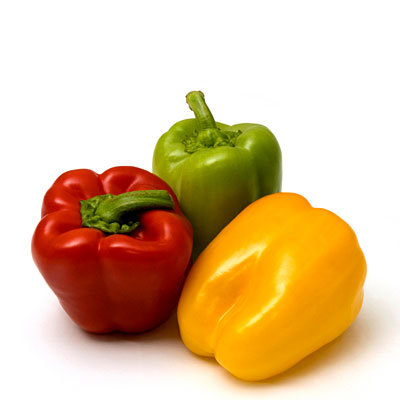
Sweet bell pepper:
0 Scoville Heat Units (SHU). The standard green bell pepper, roughly the size of a large fist. The mildest of the mild.
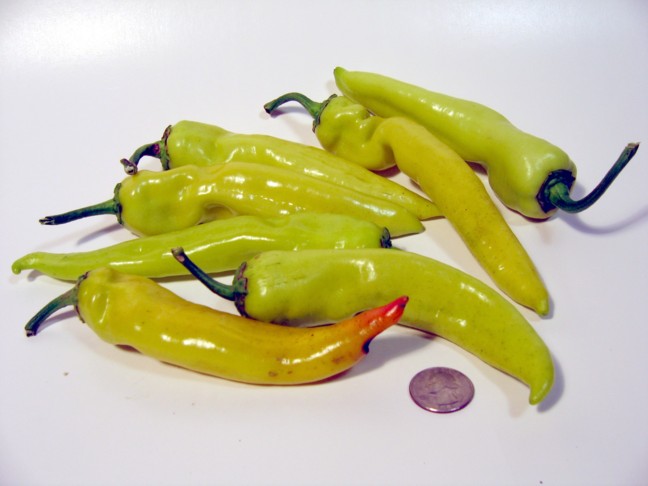
Banana pepper:
0-500 Scoville Heat Units (SHU). Also known as the Yellow wax pepper, has a mild, sweet taste that is very popular on many types of foods, you see these available as topping options for your sandwich at Subway (no affiliation between Heliotricity.com and Subway).
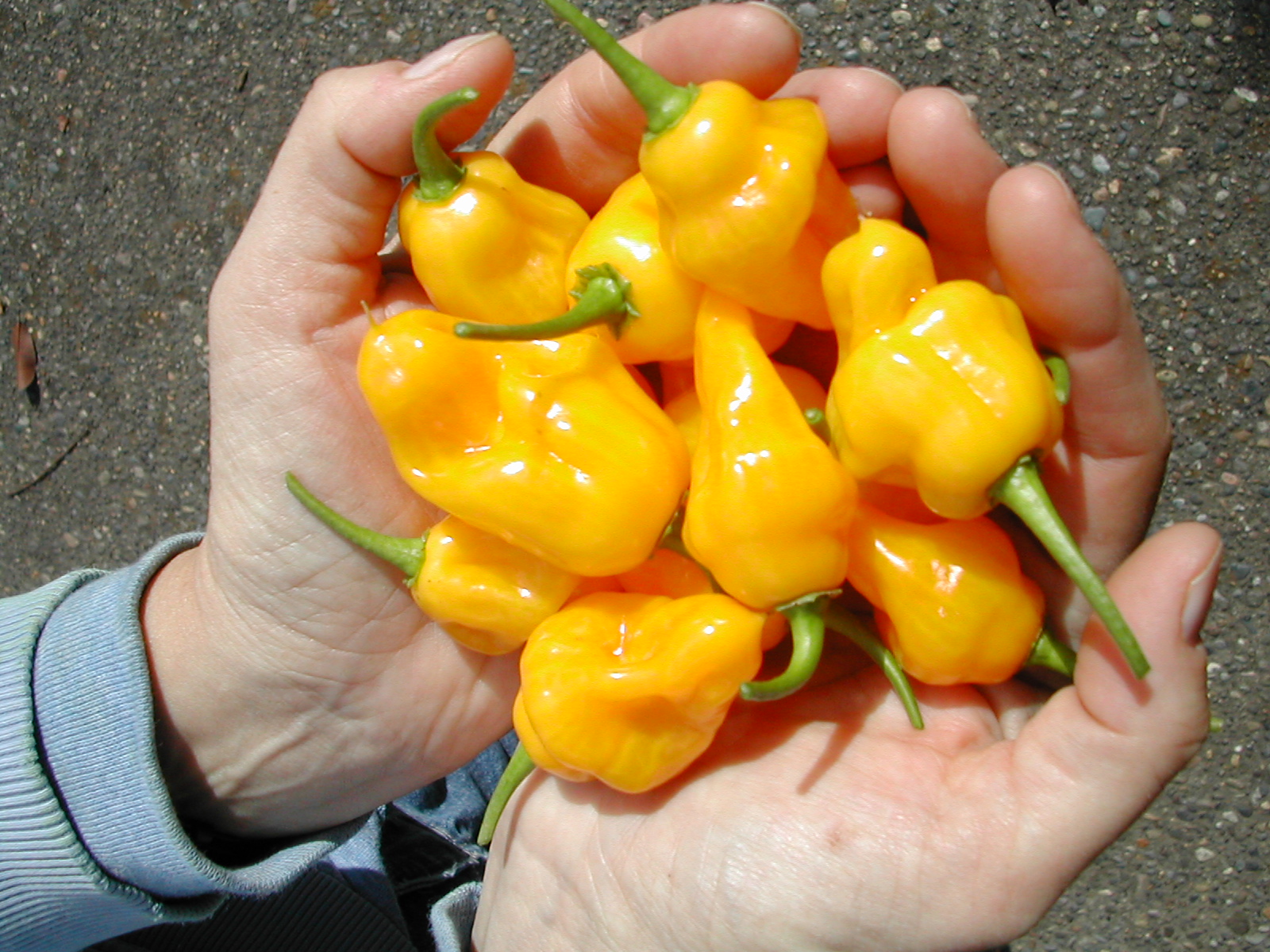
Trinidad Perfume chili pepper:
0-500 Scoville Heat Units (SHU). These are mild chili peppers with very little to no heat. It is a habañero type and produces pods similar to a typical orange habañero pepper, about 1 to 1.5 inches in length and 1.25 inches wide.
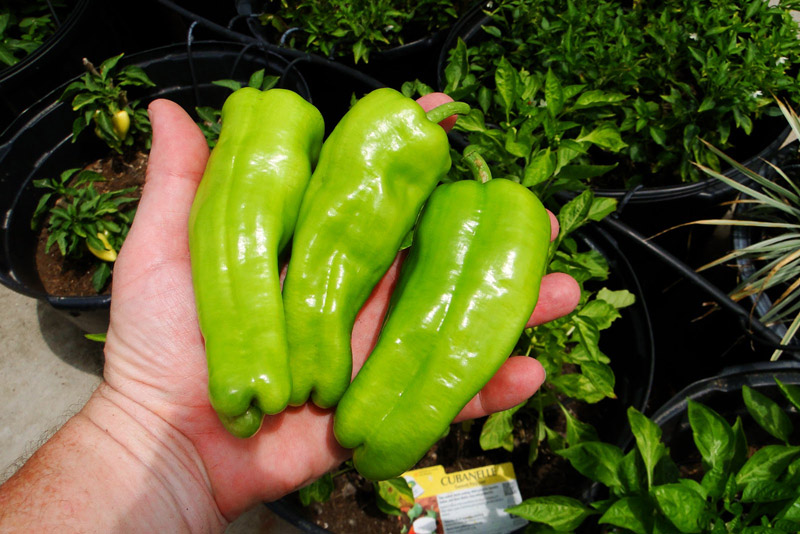
Cubanelle chili pepper:
0 – 1,000 Scoville Heat Units (SHU). Capsicum Annuum. Considered a sweet pepper, although its heat can range from mild to moderate. Cubanelles are usually picked before they ripen, while they are a yellowish-green color, but when ripe, they turn bright red.
Pimento (or Pimiento) chili pepper: 100 – 500 SHU. Not just for stuffing olives. Gringo note (Pimiento means “pepper” in Spanish.)
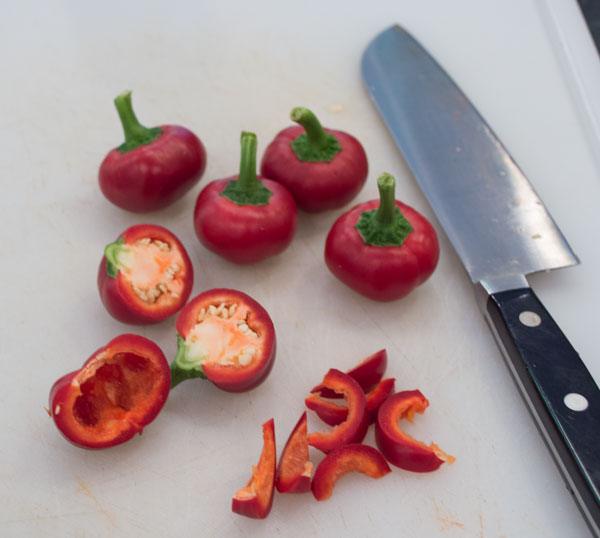
Cherry pepper:
100 – 500 SHU. See “Pimento” chili pepper.
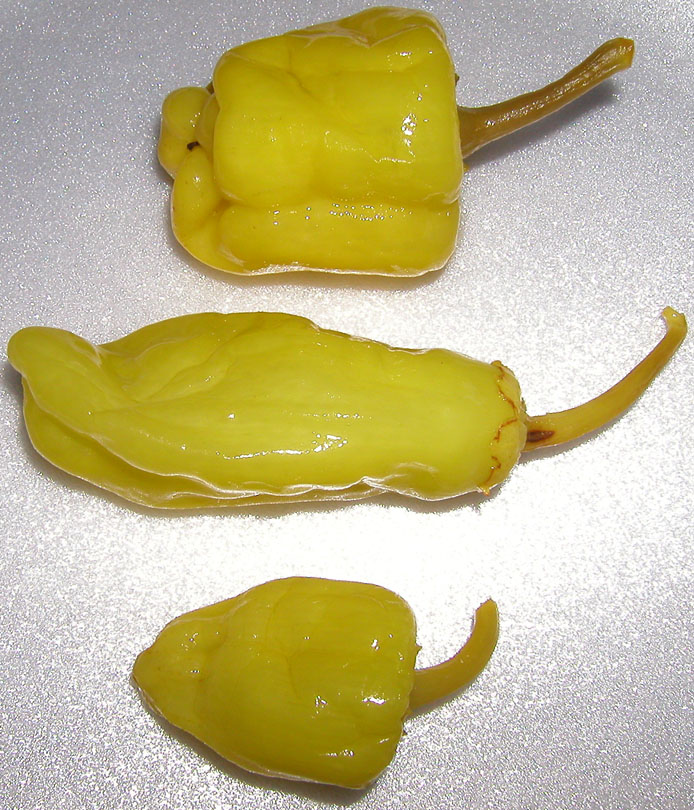
Pepperoncini:
100-500 SHU. Also known as Tuscan Peppers. These sweet, mild chili peppers are found in Italy and Greece. Commonly found in the states on Greek salads, when biting in to them one must use caution so that the juice does not spray ones own eye (this has never happened to me.)
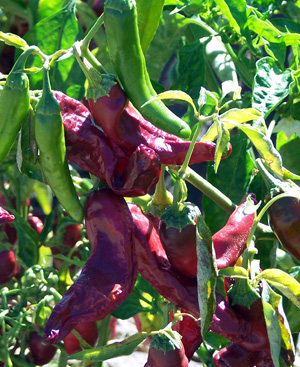
NuMex R Naky chili pepper:
250-750 SHU. Anaheim-type hybrid created by Dr. Nakayama of New Mexico State University in 1985.
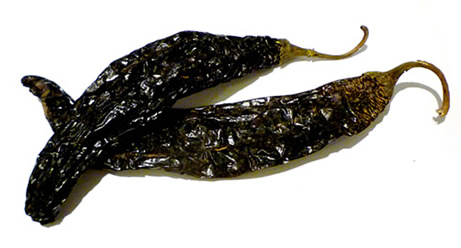
Pasilla chili pepper:
250 – 3,999 SHU. Pasilla or “little raisin” properly refers to the dried chilaca pepper. The chilaca, when fresh, is also known as pasilla bajio, or as the chile negro or “Mexican negro” because, while it starts off dark green, it ends up dark brown. It typically grows from 8 to 10 inches long.
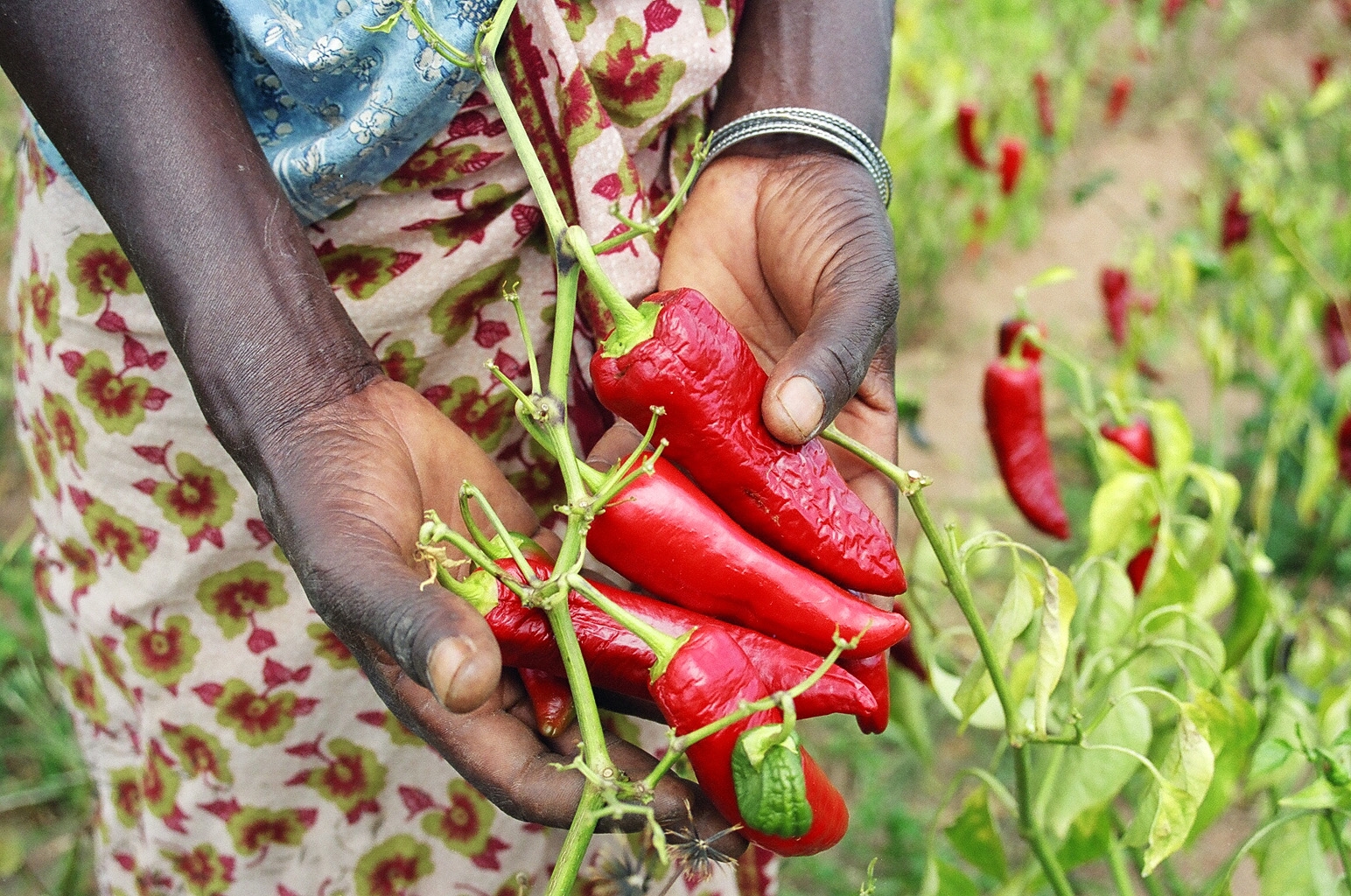
Paprika chili pepper:
250 – 1000 SHU. A large, cone-shaped chili pepper. It is dried and ground to make the more familiar powdered spice.
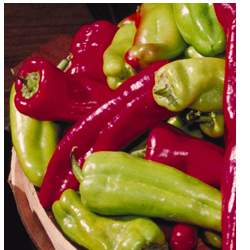
Sonora chili pepper:
300–600 SHU. The Sonora is an Anaheim variety with a very mild flavor. It grows to about 10” in length and up to 1 ½” wide, and although it matures to red, it is commonly used in its less mature, green form. Mild but nevertheless prone to inspire a Lord Kitchener attuned snacker to crow “Shake, shake, shake, Sonora, shake your body line…”
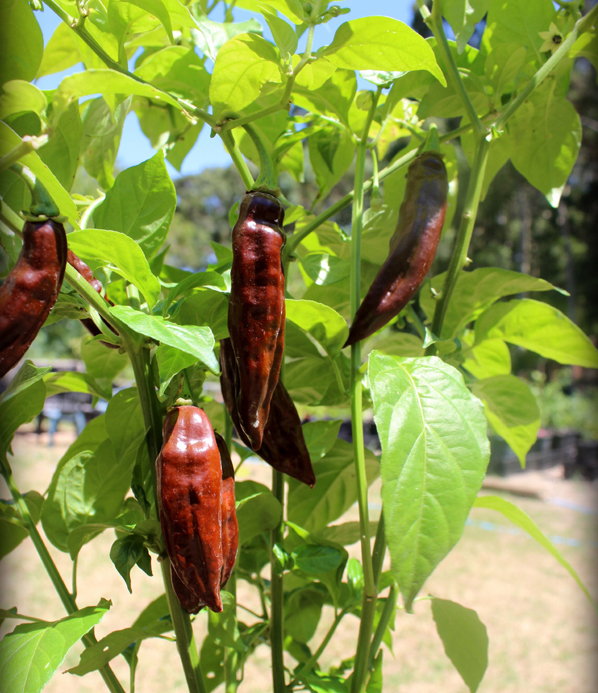
Ají Panca:
500 SHU. The Panca chili (or Ají Panca as it’s known in South America), is a deep red to burgundy pepper, measuring 3-5 inches.
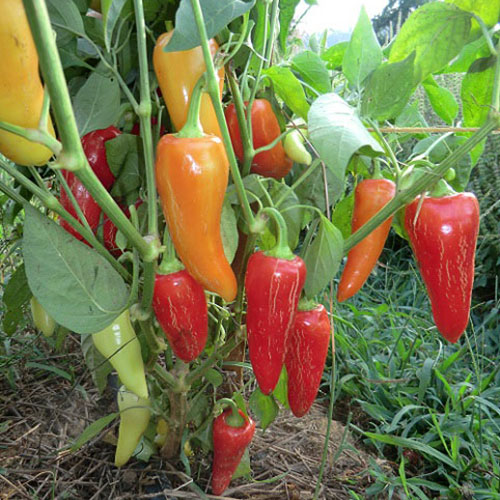
Santa Fe Grande chili pepper:
500 – 700 SHU. Also known as the yellow hot chile and the guero chile. Approximately 5 inches long and ripen from greenish-yellow, to orange-yellow to red.
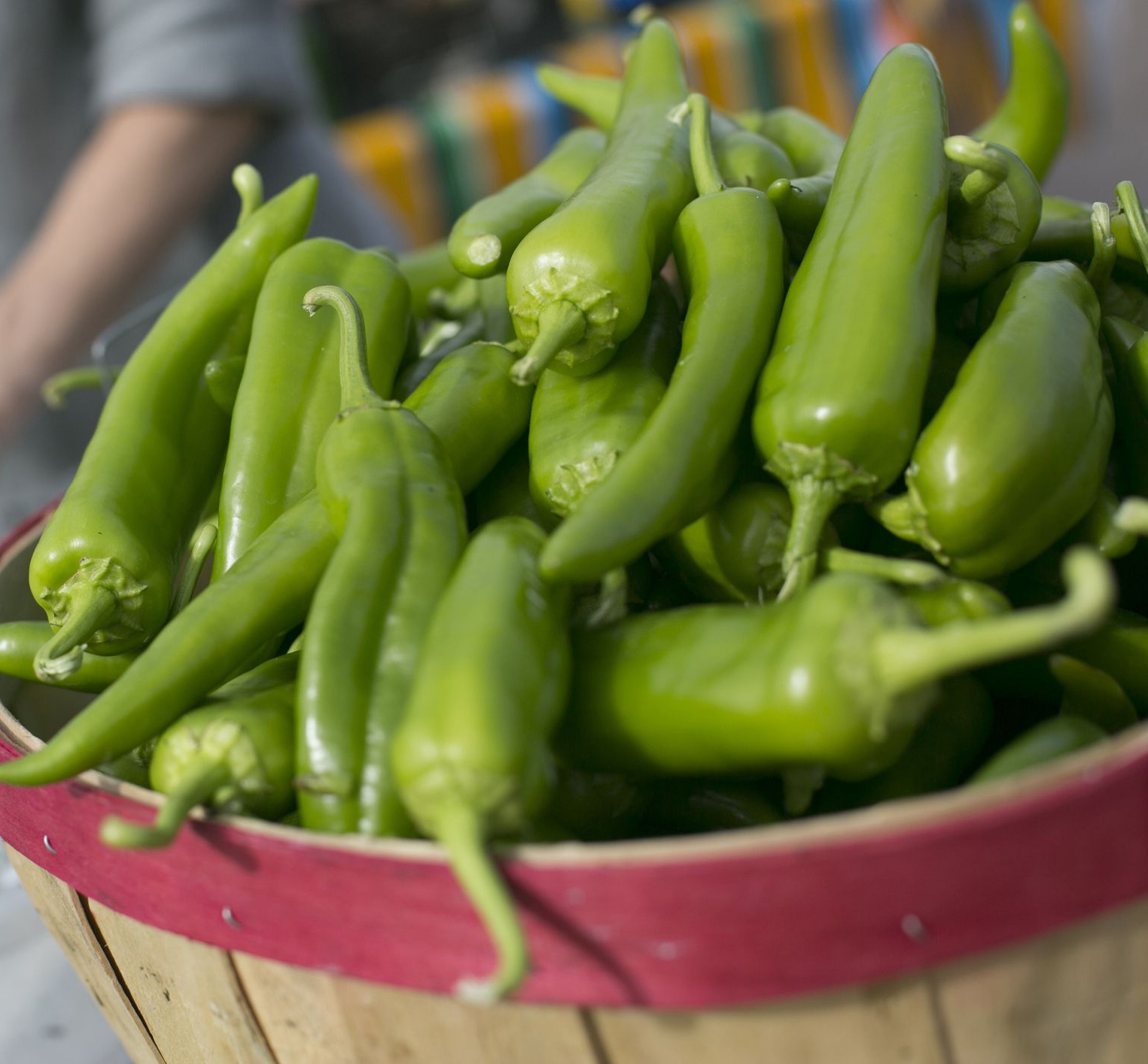
Anaheim chili pepper:
500 – 1,000 SHU. A mild, medium sized chili pepper that grows to 6-10 inches, often used when green, though it can be used when red.
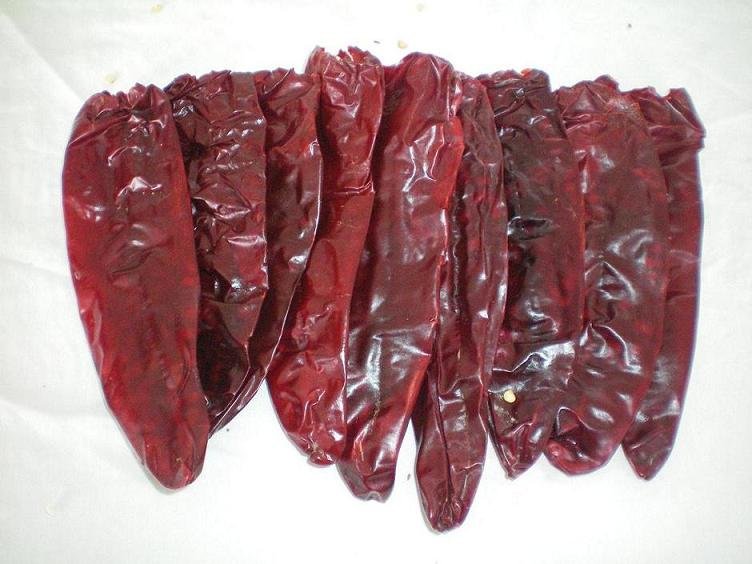
Coronado chili pepper:
700-1,000 SHU. Originally from South America, the Coronado Pepper grows to 4” long and 2” wide with thin, waxy skin.
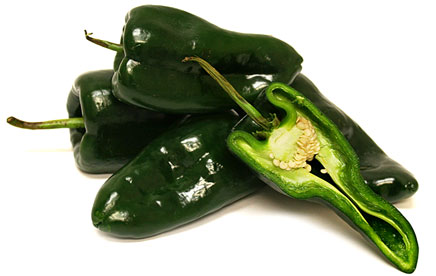
Poblano chili pepper:
1,000 – 2,000 SHU. Extremely popular chili pepper. 4 inches long, very dark green in color, ripening to dark red or brown. You can often find these stuffed with various delightful fillings in Mexican cuisine, ¡Que rico!
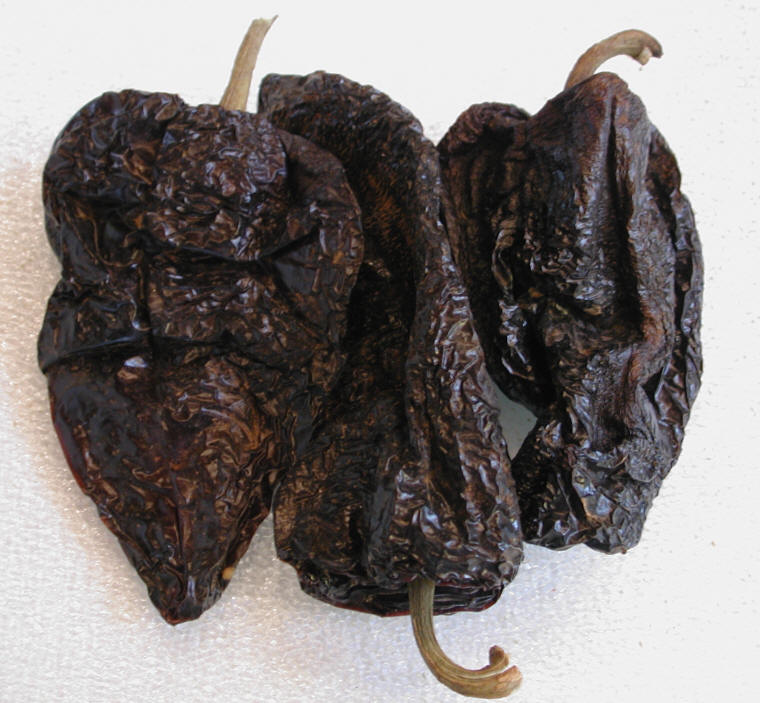
Ancho chili pepper:
1,000 – 2,000 SHU. An Ancho (wide) pepper is dried form of the poblano chili pepper.
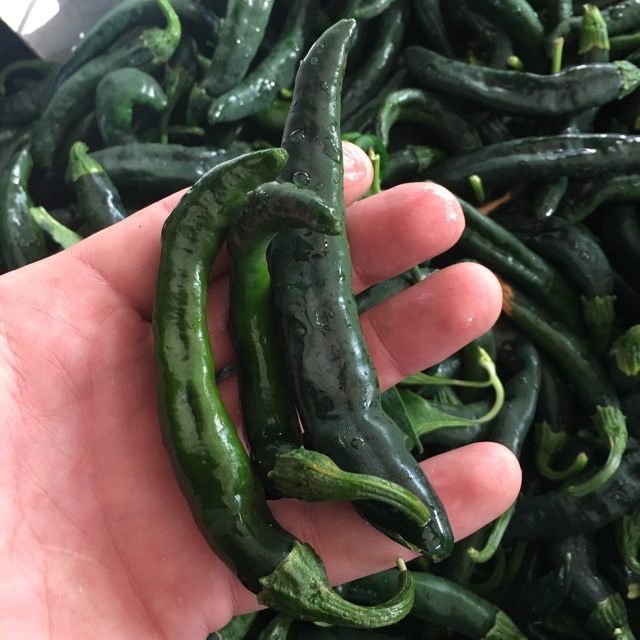
Chilaca:
1,000-2,500 SHU. The Chilaca is a curved, long, thin pepper, that grows to about 6-9 inches, and 1 inch wide.
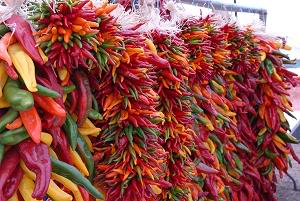
Hatch chili peppers:
1,000 – 2,500 SHU. Hatch chili peppers are grown and harvested in Hatch Valley, New Mexico. They are harvested in late July and early August and have a mild to medium flavor. The peppers are long and curved, much like the Anaheim chili pepper, and are perfect for stuffing.
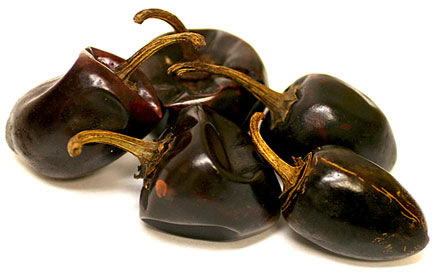
Cascabel chili peppers:
1,000-3,000 SHU. Capsicum Annuum. The Cascabel Chile is grown in several areas of Mexico. It is small and round, 2-3 cm in diameter, and matures to a deep red.
Picuante/ Peppadew chili pepper:
1,177 SHU. Capsicum Baccatum. These are grown in the Limpopo province of South Africa, and is actually the brand name of sweet piquanté peppers.
Aji chili pepper:
1,177 – 75,000 SHU. Also known generally as the Peruvian hot pepper, aji is the common name primarily in South America and areas of the Caribbean for chili peppers.
Española chili pepper:
1,500-2,000 SHU. The Española was developed in New Mexico in the 1980s by crossing a Sandia pepper with another New Mexico chile.
Rocotillo chili pepper:
1,500-2,500 SHU. There is some confusion about the rocotillo chili pepper, since some appear to be from Capsicum baccatum and some from Capsicum Chinense.
NewMex Joe E. Parker chili pepper:
1,500-3,000 SHU. This New Mexico variety was named after Mr. Joe E. Parker, a graduate of NMSU’s College of Agriculture and Home Economics, who helped to evaluate this selection of chile.
Mulato chili pepper:
2,500-3,000 SHU. Capsicum Annuum. The Mulato is a mild to medium dried Poblano, similar to the Ancho, but with a slightly different flavor.
New Mex Big Jim chili pepper:
2,500-3,000 SHU. This giant chili pepper was introduced by New Mexico State University in the 1970s as a cross between a few different types of local chiles and a Peruvian chile.
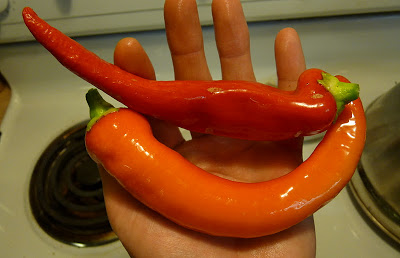
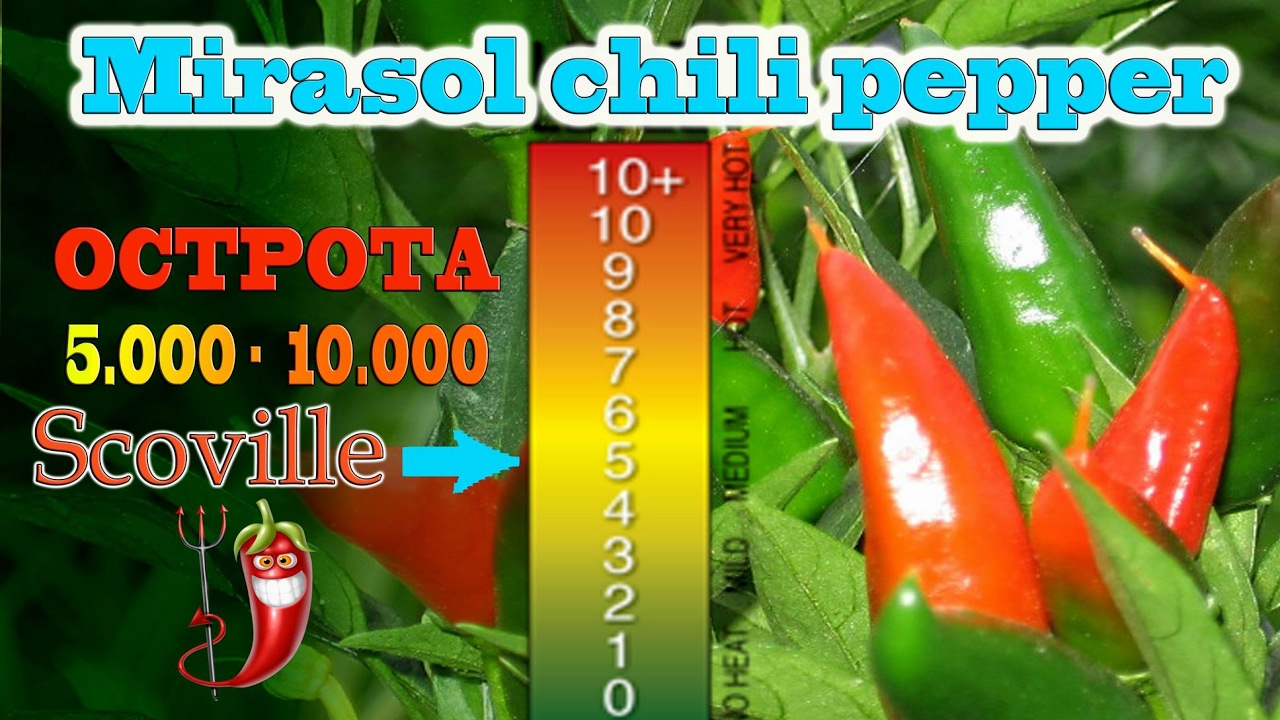
Mirasol chili pepper:
2,500-5,000 SHU. The name Mirasol means “looking at the sun” in Spanish, which describes the way these peppers grow on the plant. They are known as Guajillo in their dried form, which are one of the main chiles used in traditional mole sauces.
Cascabel chili peppers:
1,000-3,000 SHU. Capsicum Annuum. The Cascabel Chile is grown in several areas of Mexico. It is small and round, 2-3 cm in diameter, and matures to a deep red.
Guajillo chili pepper:
2,500-5,000 SHU. Capsicum Annuum. The Guajillo is one of the most common and popular chiles grown and used in Mexico. It is mild to moderately hot, and has dark, reddish brown, leathery skin.
Jalapeño chili pepper:
2,500 – 8,000 SHU. The world’s most popular chili pepper! Harvested when they are green or red if allowed to ripen, about 4-6 inches long. A chipotle is a smoked jalapeño chili pepper.
Purple Jalapeño chili pepper:
2,500 – 8,000 SHU. The Purple Jalapeño is an ornamental version of the typical jalapeño pepper.
Chipotle chili pepper:
2,500 – 8,000 SHU. A chipotle is a smoked jalapeno chili pepper. You’ll notice the distinctive smoky flavor of certain foods like salsas that have been prepared with chipotle peppers. Very delicious.
Morita chili pepper:
2,500 – 8,000 SHU. A smoked red jalapeño, similar to a chipotle pepper.
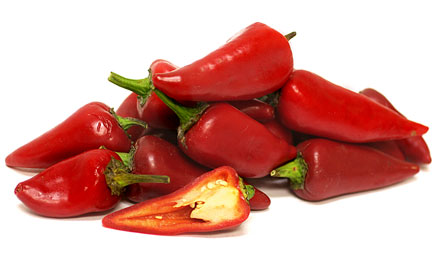
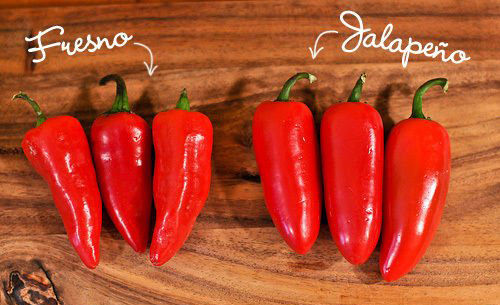
Fresno chili pepper:
2,500-10,000 SHU. Capsicum Annuum. The Fresno pepper looks and tastes almost like a jalapeño, but they can be much hotter. Fresno peppers change from green to red as they grow, and increase in hotness, but they are often harvested and sold as green.
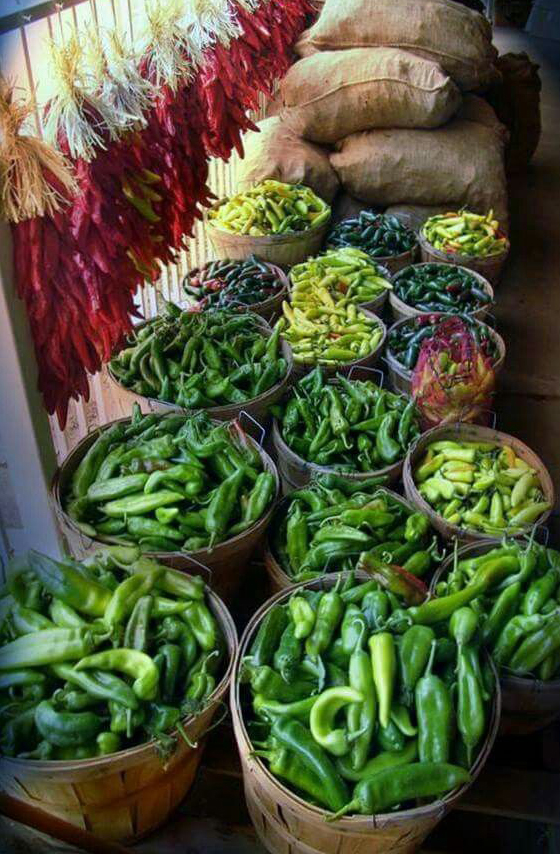
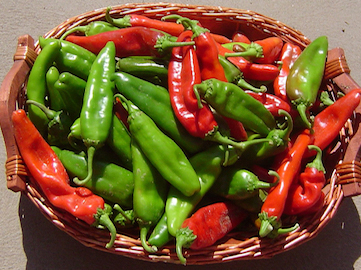
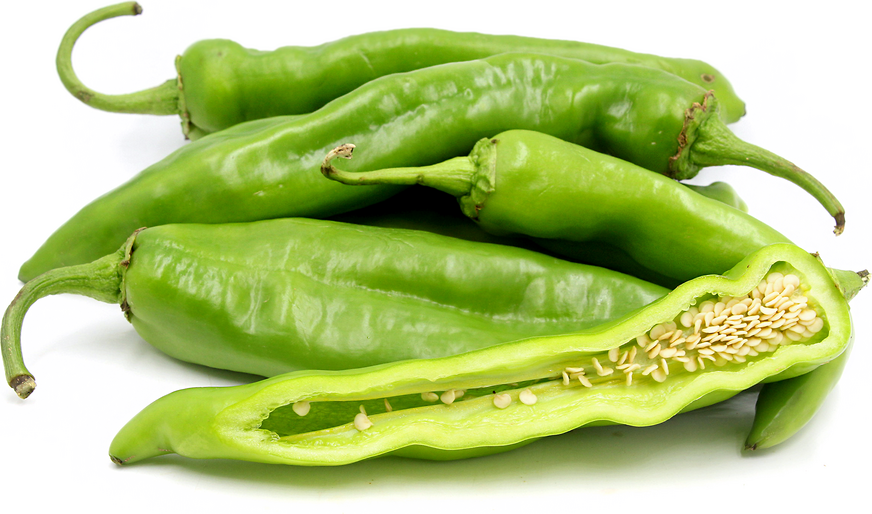
New Mexico 6-4 Heritage chili pepper:
3,000-5,000 SHU. These have a really interesting story: Apparently the original NM 6-4, which was released in 1957, had “run out,” meaning that after so many years of commercial growing, had lost much of its flavor and aroma, and had increased its variability in heat levels, maturity date, and yield.
In 1998 Dr. Paul Bosland, along with NMSU’s Chile Pepper Institute and Biad Chili, used seeds from the original NM 6-4 that had been frozen in a storage lab to create the new line of chile. Dr. Bosland grew the peppers for three years, perfecting the line by selecting for more flavor and improved yield. The result was a chile with five times more flavor and aroma than the original!, and the flavor is even stronger and richer when roasted. They grow to 5-8 inches in length. How cool is that?
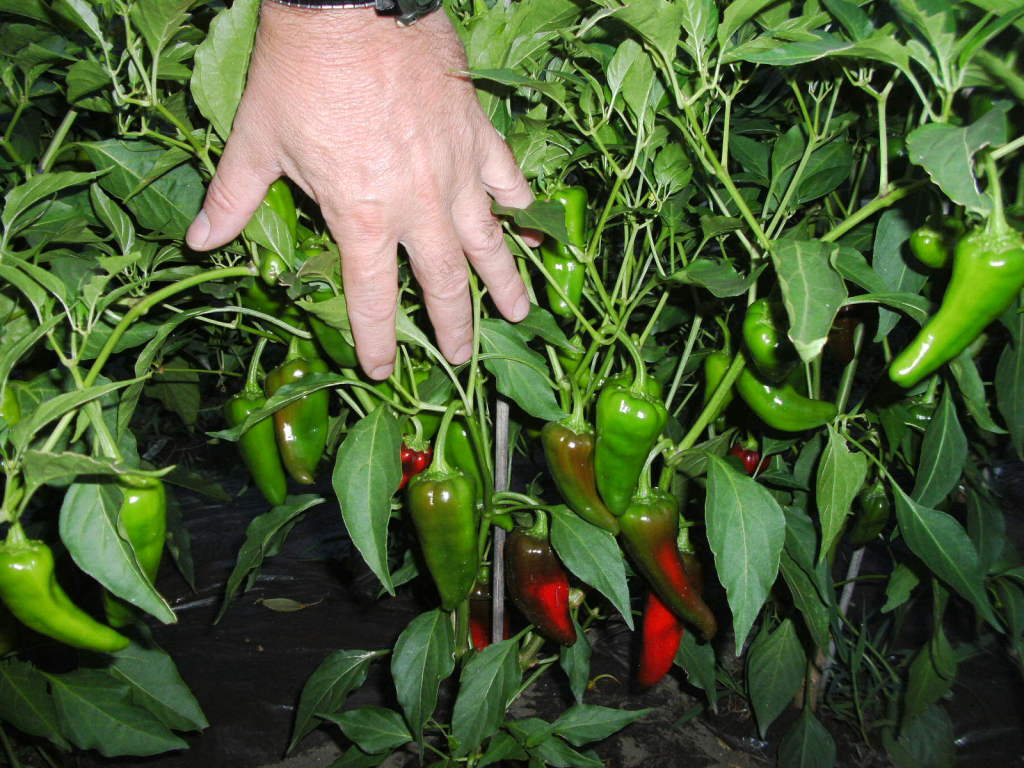
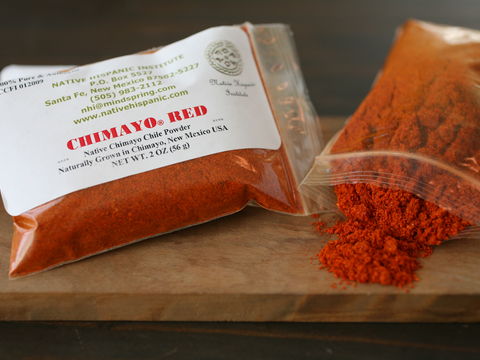
Chimayo chili pepper:
4,000 – 6,000 SHU. The Chimayo is another New Mexico chile, but it is a unique one. It is not commercially mass produced, but is more commonly grown in individual homes and gardens, making them unpredictable and un-conforming, in a good way.
Sandia chili pepper:
5,000 – 7,000 SHU. Another chili from New Mexico, the Sandia grows to 6-7” and is similar to the Anaheim pepper. They start green and ripen to red, but are often used while green.
Puya chili pepper:
5,000 – 8,000 SHU. The Puya chile is similar to the Guajillo, but smaller and hotter.
Hungarian Wax:
5,000-15,000 SHU. The Hungarian Wax Pepper, as its name suggests, originated in Hungary.
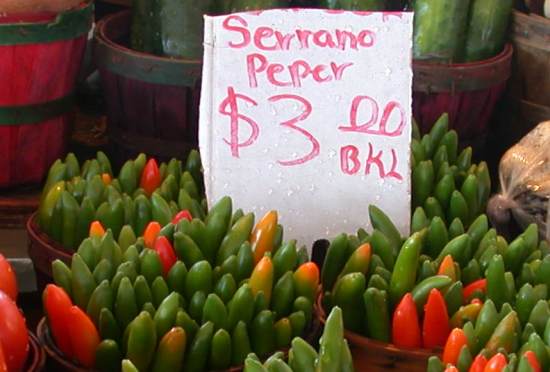
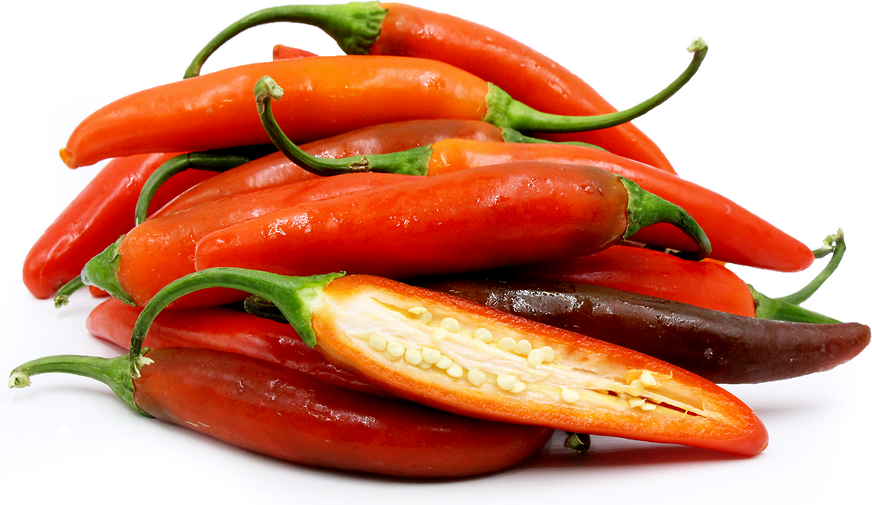
Serrano pepper:
5,000 – 23,000 SHU. A smaller version of the jalapeño, similar in color, but smaller, about 1 to 2 inches long, 1/2 inch wide. Dark green to redish in color. Look at the SHUs ascending…
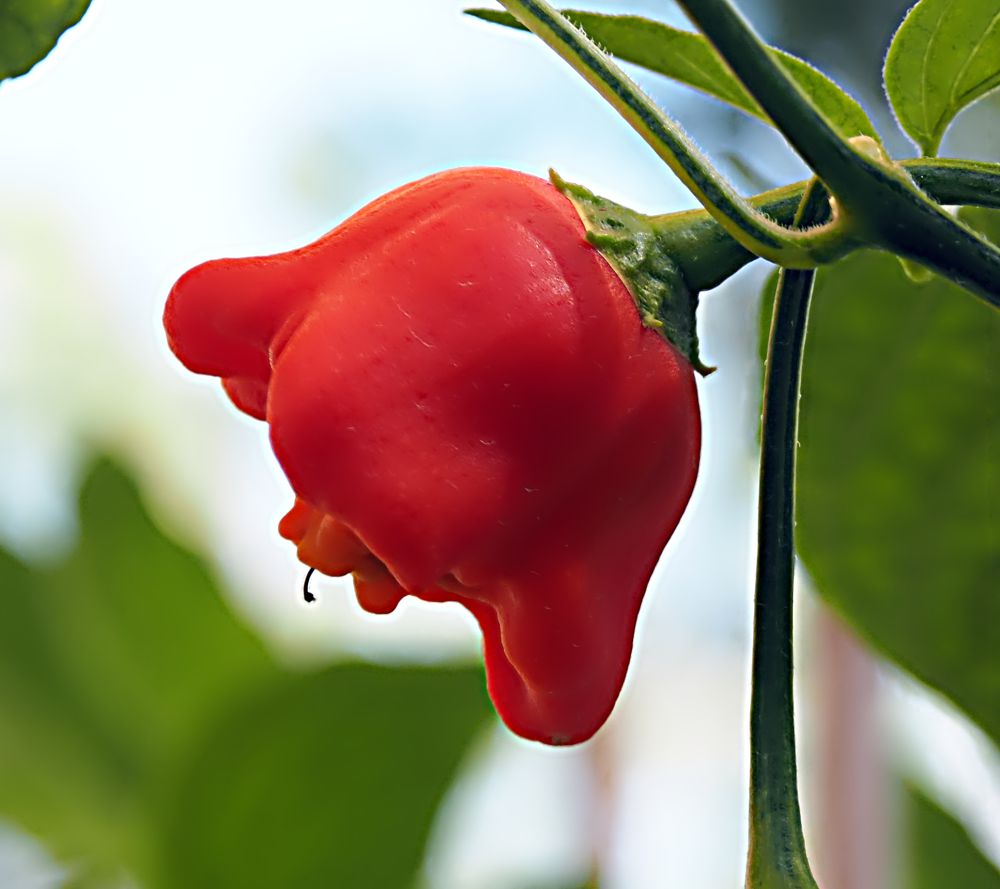
Bishop’s Crown chili pepper:
5,000 – 30,000 SHU. Capsicum Baccatum. “You sexy mutha…” I can hear Prince singing now…This chile is a member of the Capsicum Baccatum species, which includes the Ají pepper.
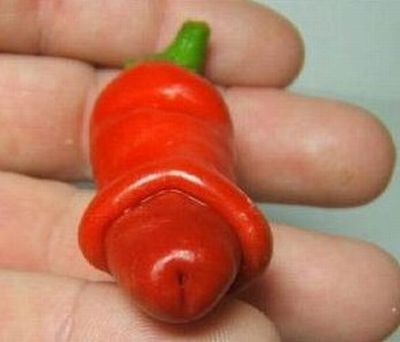
Peter Pepper:
5,000 – 30,000 SHU. Capsicum annuum. One would have to get thee to a nunnery to ignore this little phallic force of nature. We have here a very interesting little chili conversation piece be it in the garden or in the kitchen due to its distinctively phallic shape, hence its name.
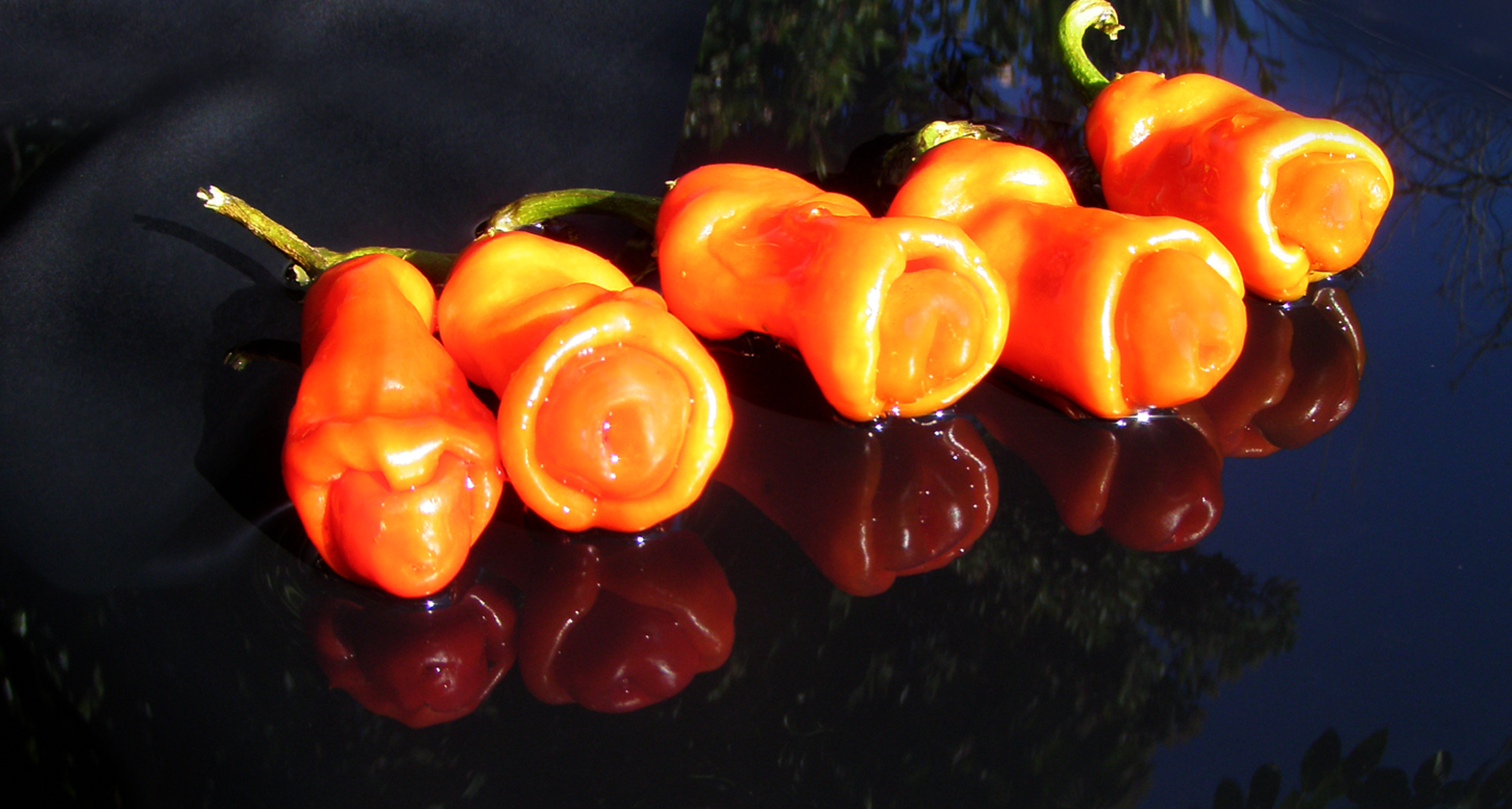
Listen, with all due respect, I think most of us would agree that it would be difficult to recognize these fine peppers for being anything other than a pack of pickled peckers.
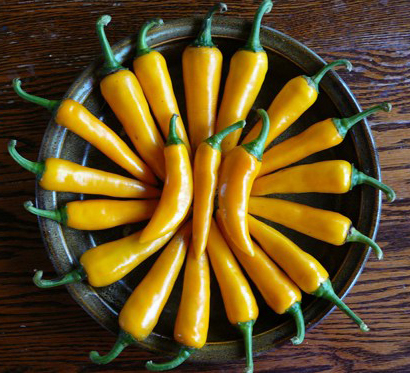
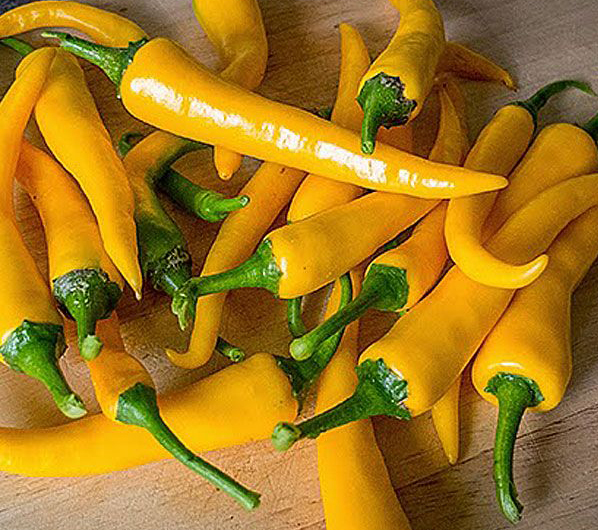
Shipkas (or Bulgarian Carrot) chili pepper:
5,000-30,000 SHU. Also known as the “Bulgarian Carrot Pepper,” this interesting little chili pepper looks remarkably like a carrot, with its bright orange color and long, narrow body.
Hidalgo chili pepper:
6,000-17,000 SHU. The Hidalgo is an heirloom pepper, similar in shape and hotness to the Serrano, originally from Mexico and Central America.
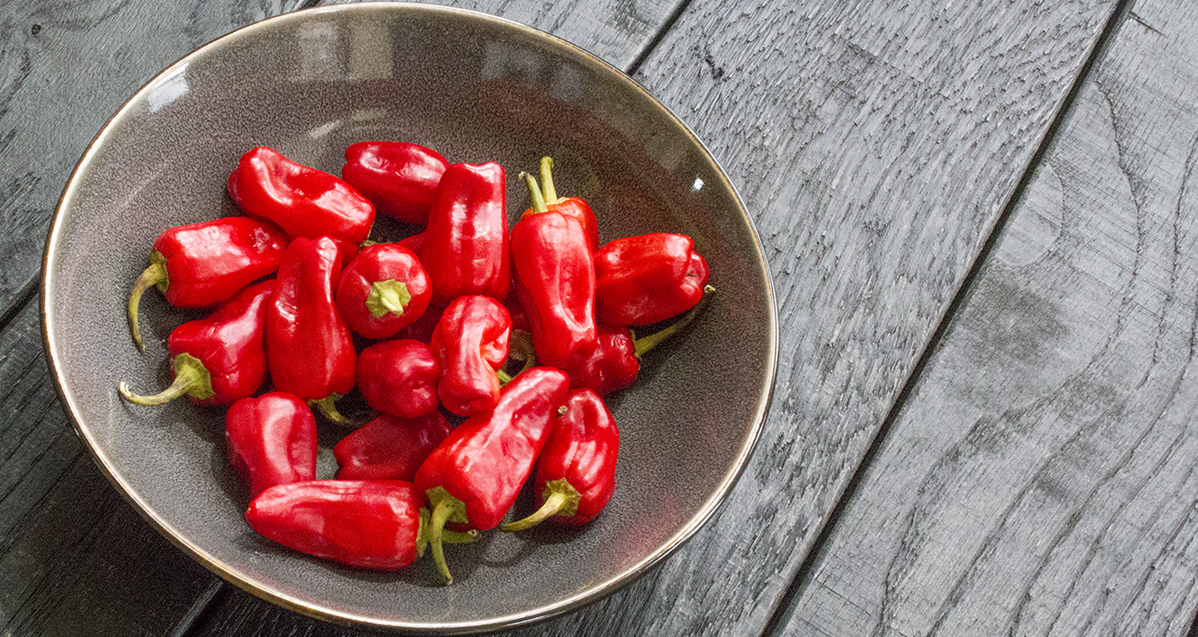
Aleppo:
About 10,000 SHU. Capsicum Annuum. Also known as the Halaby pepper, is named after the city of Aleppo in Northern Syria. It is commonly grown in Syria and Turkey, and in accordance with Syrian customs is usually dried and crushed as is any opposing regime.
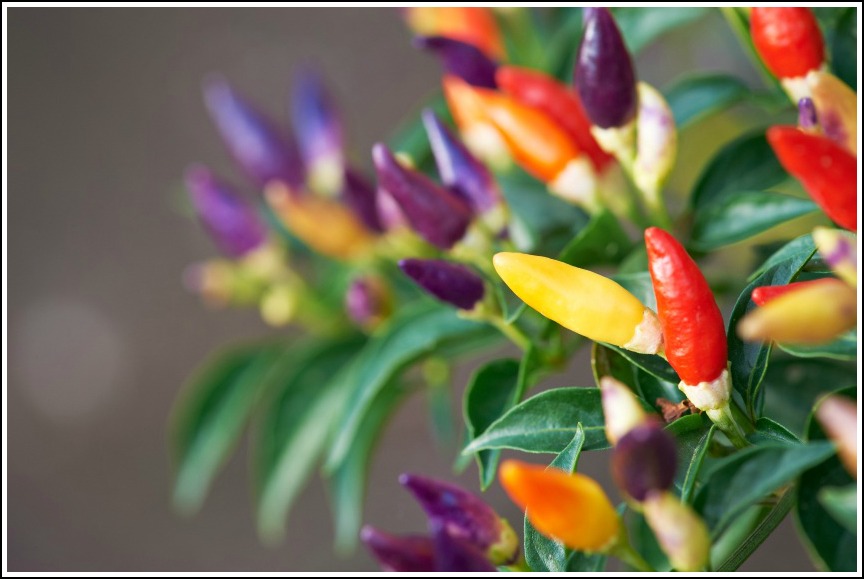
Bolivian Rainbow chili pepper:
10,000 – 30,000 SHU. Grown for centuries in Bolivia (Central South America), the Bolivian Rainbow chile is a stunningly beautiful plant.
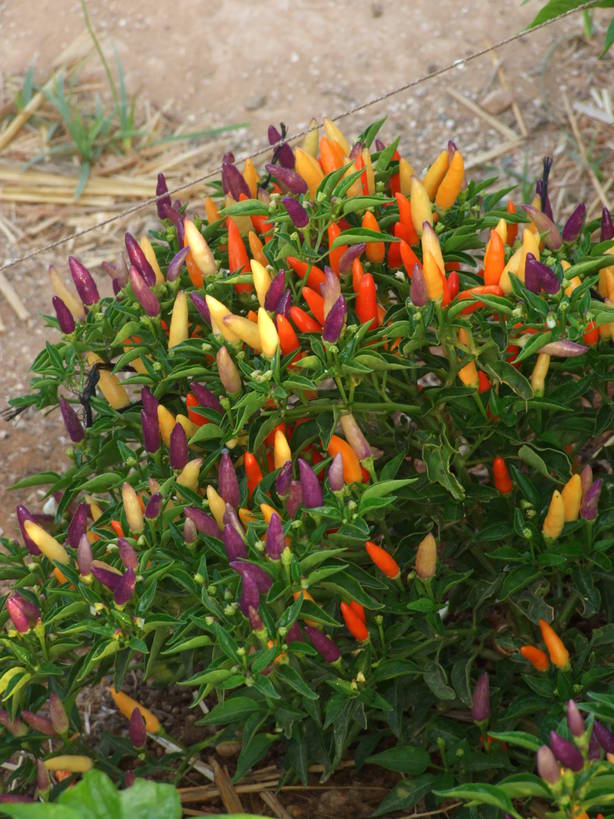
Bolivian Rainbow chili peppers in all their majestic splendour. ¿Que bonita, no?
Baker’s Hot chili pepper:
15,000 – 30,000 SHU. The Barker’s Hot is an extra-hot chile, the hottest of the Anaheim/ New Mexico variety, and it has great flavor.
Lemon Drop Chile Pepper: 15,000-30,000 SHU. This bright yellow, citrus-flavored chile is also known as Kellu Uchu in Peru, where it originated.
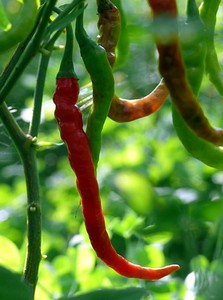
Jwala Finger Hot chili pepper:
20,00 0- 30,000 SHU. The Jwala is the most popular chile in India, adding great flavor and spice to many Indian dishes. Apparently first discovered in an abandoned Jawa Sandcrawler on Tatooine. Pure mischief upon ones buds.
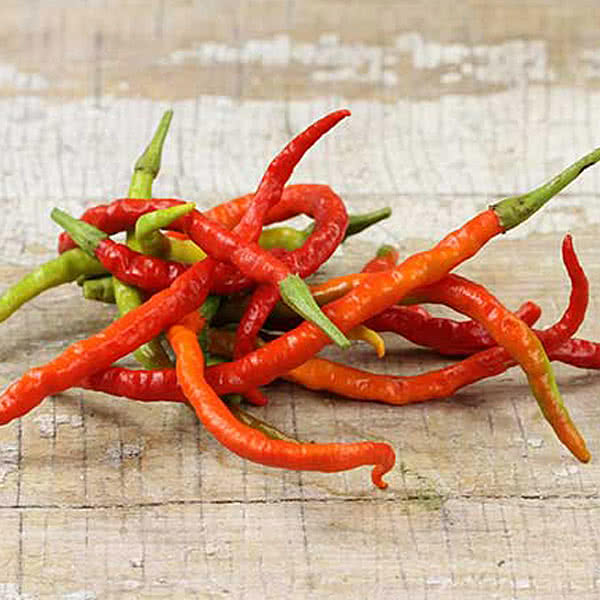
Jwala Me two times Babe:
“Once for tomorrow, once just for today…” I know you all have good manners, are polite and nobody is saying anything, but we are all thinking it. Even though we loved the Star Wars reference, that last Jwala photo just didn’t do any Jwala anywhere any justice. See above. Next stop Limo.
Ají Limo:
30,000 – 50,000 SHU. The Limo chile (or Ají Limo) is another super-hot chili from Peru. (Ají is the term for chile pepper in South America.)
Ají Amarillo:
30,000 – 50,000 SHU. “Amarillo” means yellow in Spanish, and “Ají” is the South American term for chile, this pepper is also appropriately known as the “yellow chile.” Don’t be confused though, it certainly will not run when confronted.
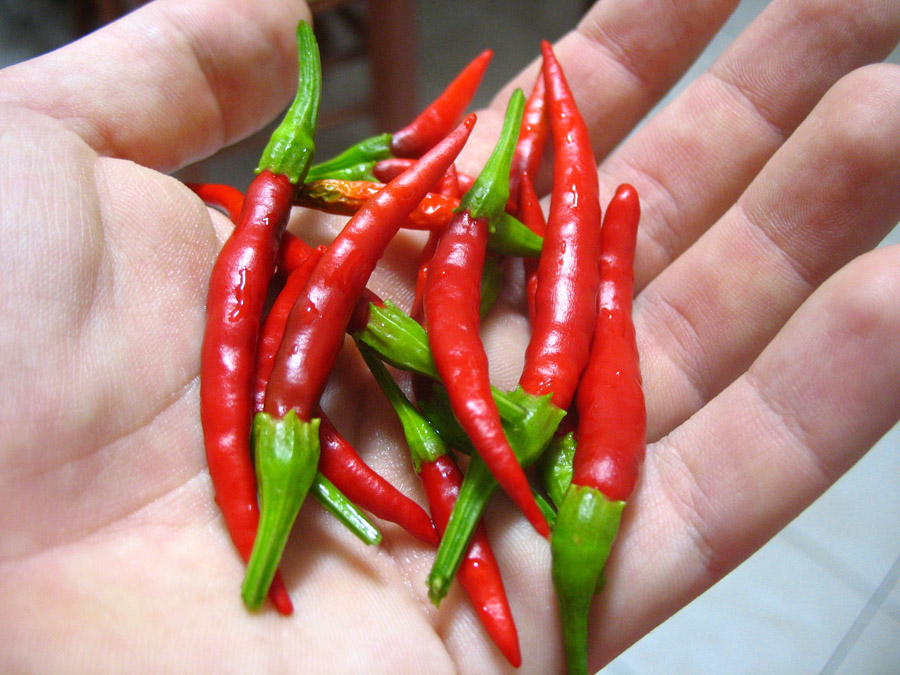
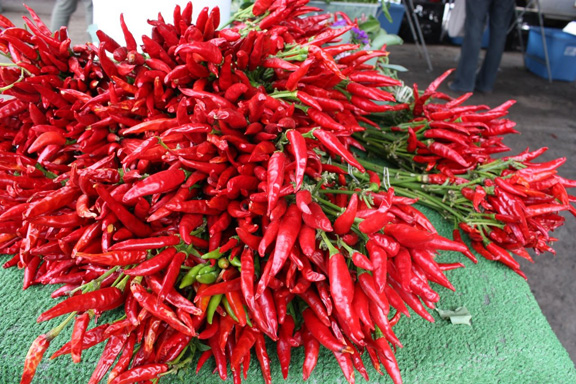
Chile de Árbol chili pepper:
Sources rate this chile in 2 categories – 15,000 – 30,000 and 50,000 – 65,000 SHU. Capsicum Annuum. Chiles de Árbol are small and thin Mexican peppers, growing to 2-3 inches long and less than a ½ inch wide.
Tabasco pepper:
30,000 – 50,000 SHU. You may recognize this one, it is in fact the very chili pepper used in Tabasco sauce. The fruit is tapered and under 2 inches long. The color is usually creamy yellow to red.
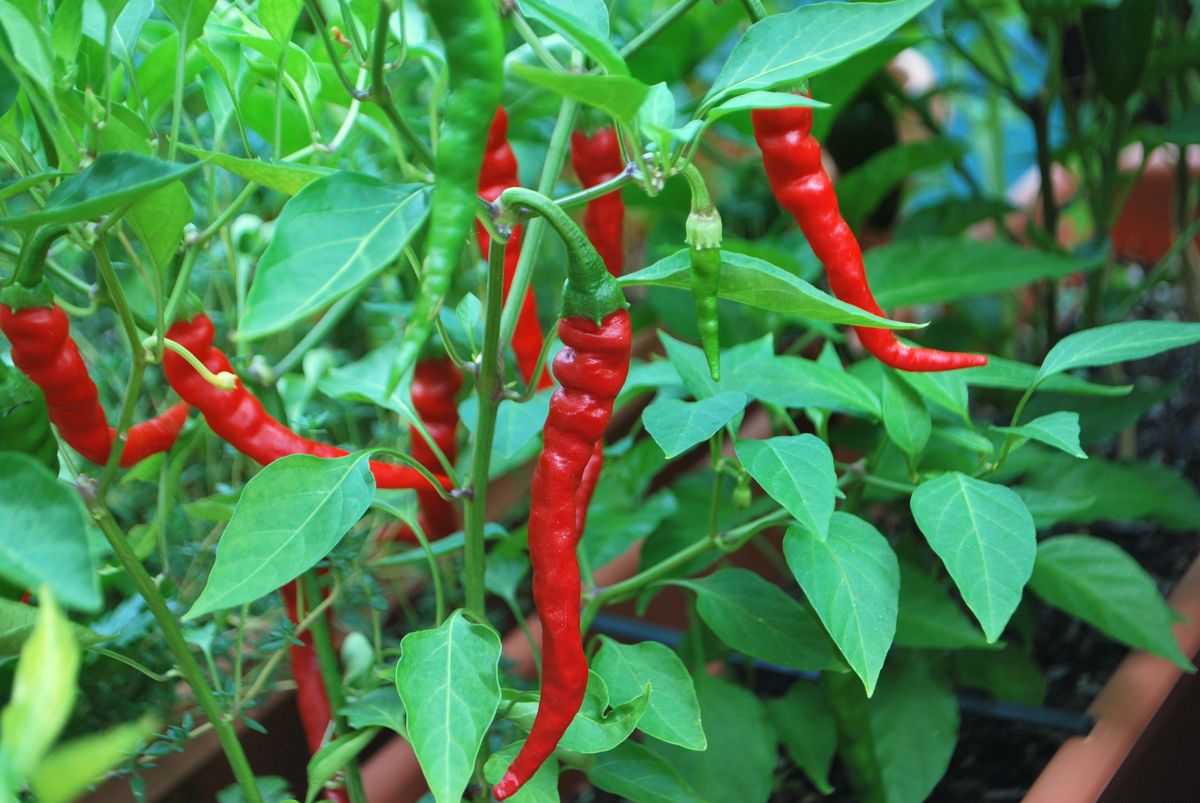
Cayenne pepper:
30,000 – 50,000 SHU. A thin chile pepper, green to red in color, about 2 to 3 inches long. The “cayenne pepper” spice you use is the dried, ground version of this pepper.
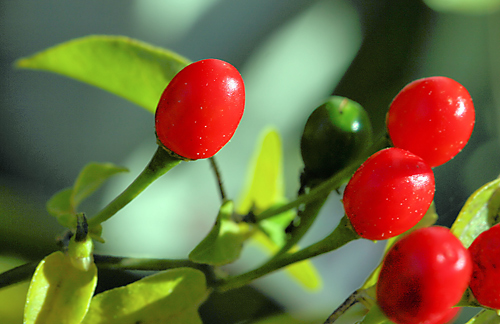
Chile Pequin chili pepper:
30,000 – 60,000 SHU. Capsicum Annuum. Also spelled Piquin, this chile is also called Bird Pepper, because it is consumed and spread by wild birds.
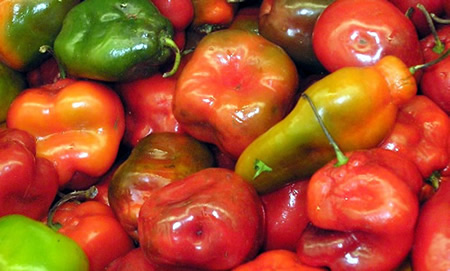
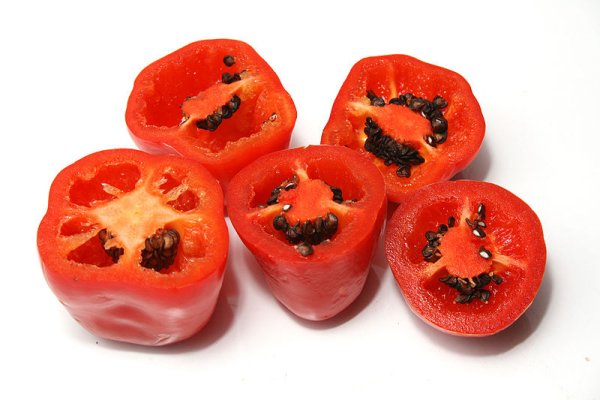
Rocoto chili pepper:
30,000 – 100,000 SHU. AKA the Manzano pepper. This chili pepper is normally found in South America. It is among the oldest of domesticated chili peppers, and was grown up to as much as 5000 years ago. It is probably related to undomesticated chili peppers that still grow in South America.
Guntur Sannam chili pepper:
35,000 – 40,000 SHU. Capsicum Annuum. Grown in and around Guntur and Warangal in the state of Andhra Pradesh in India.
Super Chili chili pepper:
40,000 – 50,000 SHU. These small peppers grow upright in clusters and mature from light green to red, often with shades of orange in between.
Santaka chili pepper:
40,000-50,000 Scovilles. From Japan, a hot and flavorful Asian variety, perfect for Asian cooking, especially stir-fries.
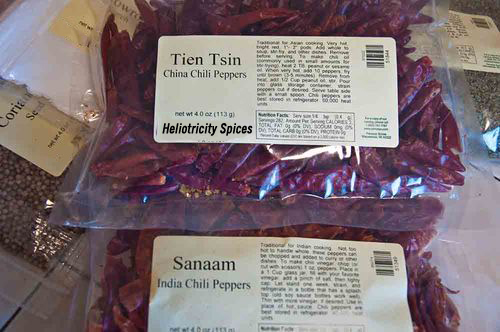
Tien Tsin pepper:
50,000 – 75,000 SHU. Named after the province in China where its harvest originally took place. Heliotricity Spices, indudablemente la mejor marca en to’ el mu. ¡Mmm sabroso!
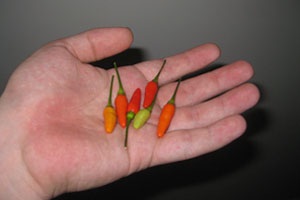
Bird’s Eye:
50,000 – 100,000 SHU. This tiny chili originated in Cambodia, Vietnam, Thailand, The Philippines, and surrounding countries, but they can now be found all over the world.
Chiltepin chili pepper:
50,000 – 100,000 SHU. Capsicum Annuum. The Chiltepin, or Chiltepine, is a tiny, round or oval shaped, red to orange-red chile, measuring about .8cm in diameter.
Thai chili pepper:
50,000 – 100,000 SHU. Despite the common belief, there is no single “Thai chili pepper” though most candidates for the title are small in size and high in heat or pungency. There are at least 79 separate varieties of chili that have appeared from three species in Thailand.
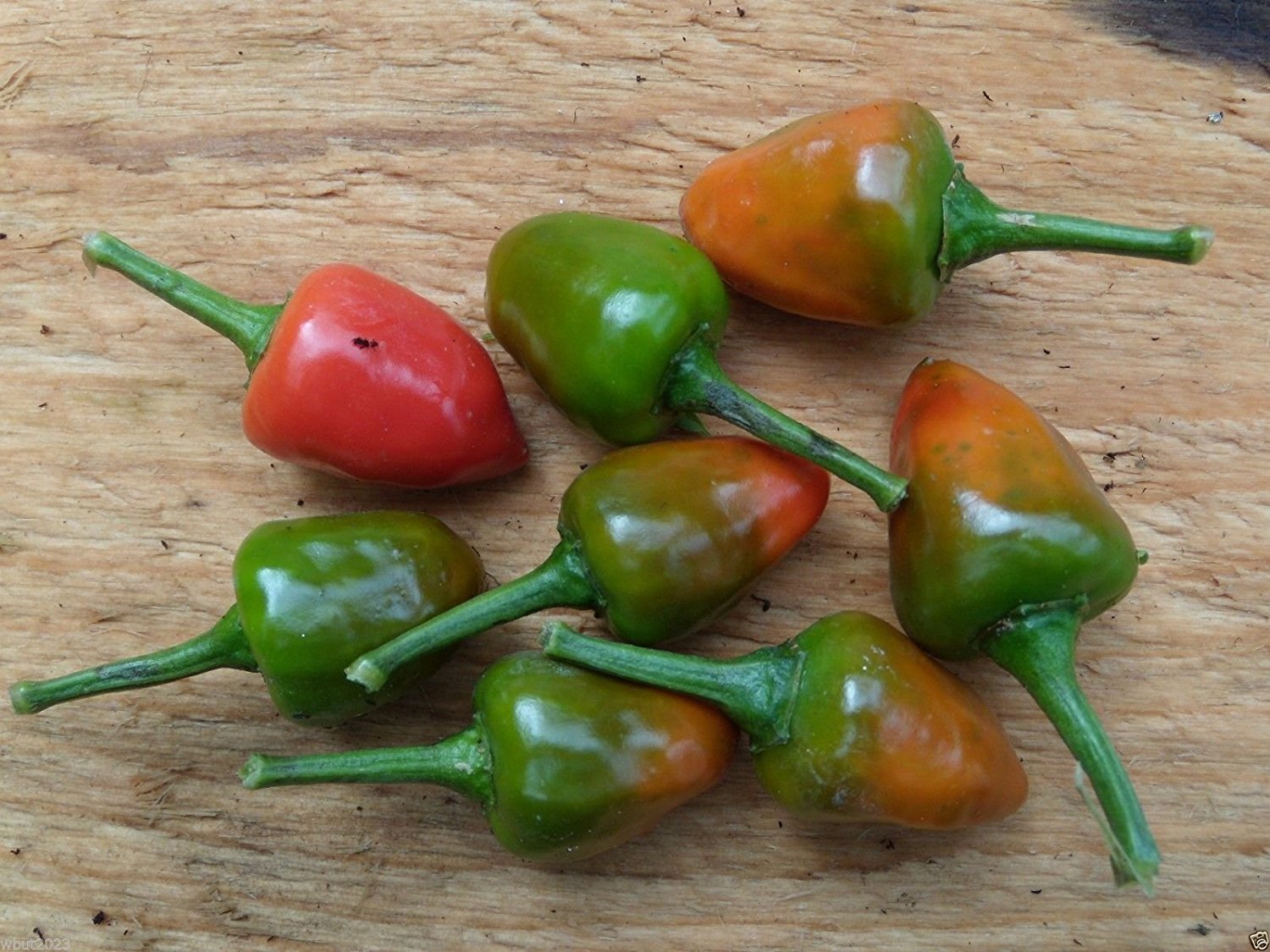
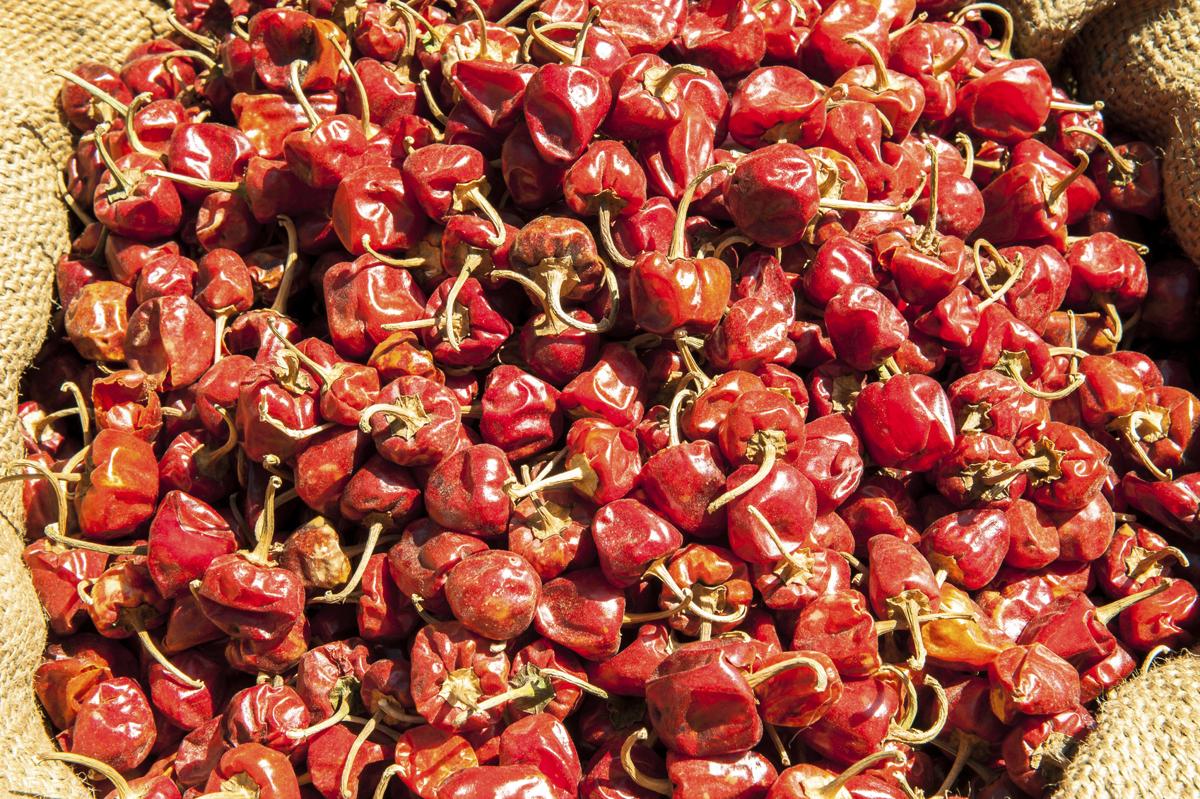
Dundicut chili pepper:
55,000 – 65,000 SHU. Capsicum Annuum. These small, round chili peppers from Pakistan grow to about ½ inch to 1 inch in diameter, and are dark red in color.
Bird’s Eye:
50,000 – 100,000 SHU. This tiny chili originated in Cambodia, Vietnam, Thailand, The Philippines, and surrounding countries, but they can now be found all over the world.
New Mex XX Hot chili pepper:
60,000 – 70,000 SHU. Another of the many New Mexico varieties. You can see by the Scoville Heat Units that is quite hot.
Diablo Grande chili pepper:
60,000 – 100,000 SHU. Comes from the same group that includes jalapeños, poblanos, cayenne, and Serrano peppers.
Malagueta chili pepper:
60,000 – 100,000 SHU. Similar in appearance to the Bird’s Eye chili or the Thai chili because of its bright red color and short, tapered body. It starts out green and matures to red, and grows to only about 2 inches.
Charleston Hot chili pepper:
70,000 – 100,000 Scovilles. Similar to the Carolina Cayenne, a variety of Cayenne created by the U.S. Department of Agriculture in South Carolina.
Red Amazon chili pepper:
75,000 SHU. The Red Amazon is actually dried Tabasco chile, but since it is so commonly known in this form, we included it separately here.
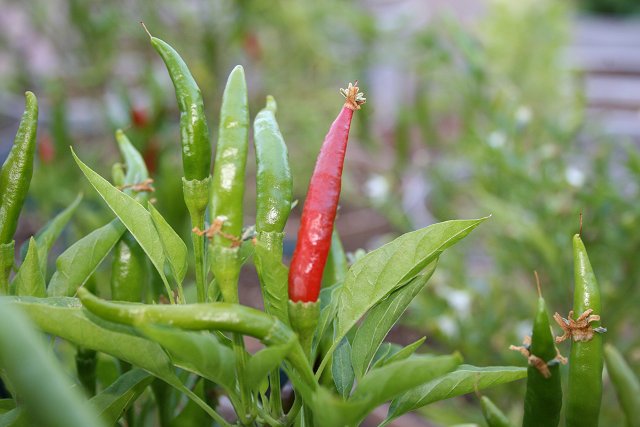
Yatsufusa chili pepper:
75,000 SHU. Also known as Japanese chile. Originating in Japan, these chiles come from small plants (the name refers to a dwarf tree) and grow upward in clusters around yellow flowers.
Tabiche chili pepper:
85,000 – 115,000 SHU. Originally from India, can now be found growing worldwide and often year-round, but it does best in hot, dry climates.
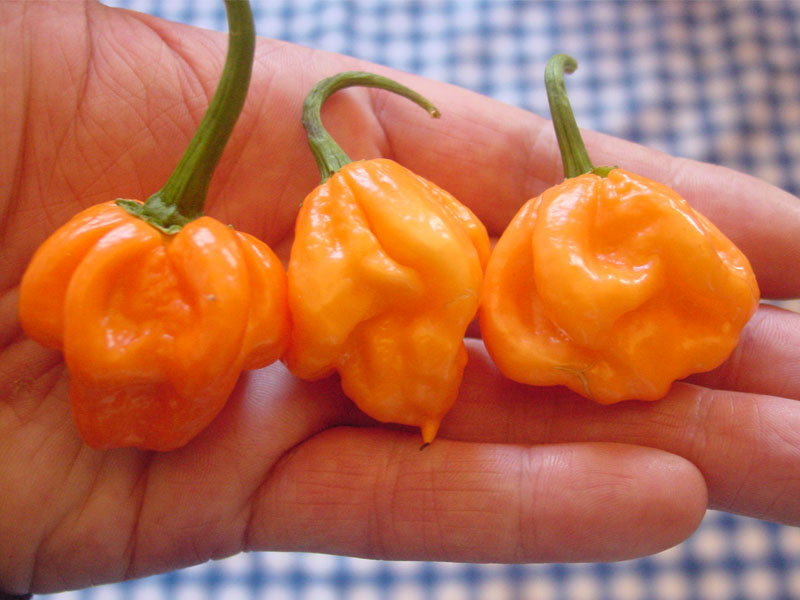
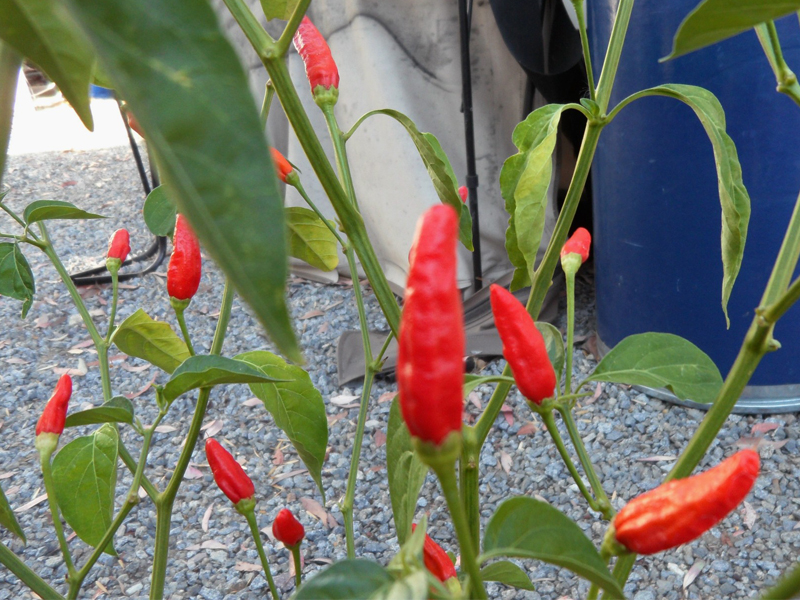
Bahamian Goat pepper:
95,000-110,000 SHU. As its name suggests, goats whose lifestyles many associate with 1960’s counterculture gravitate to this pepper. Actually, that isn’t quite true…on a more serious note when I first saw these I thought “goat” was a typo and these were some type of “ghost pepper.” Well it really is a goat pepper, and is native to the Bahamas (hence “Bahamian”), and is cousins to the habañero and the Scotch bonnet. Word is the goat pepper kicks hard, but with a sweetness to its flesh that works well with tropical hot sauces and meals. It’s very popular in its native Bahamas, but a lot trickier to find outside of the Caribbean.
Carolina Cayenne chili pepper:
100,000-125,000 SHU. Similar in appearance to the original cayenne, this variety is twice as hot and appears slightly wider.
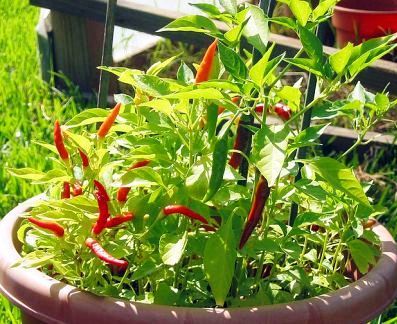
African Bird’s Eye/ African Devil:
175,000 SHU. Also sometimes known as Piri Piri, the African Bird’s Eye is a small chile, growing to only about 1 inch, but they pack a lot of punch.
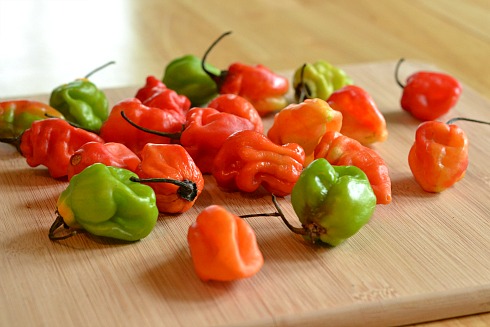
Jamaican Hot:
100,000-200,000 SHU. As the name strongly suggests, these peppers are from Jamaica, but have become popular around the world. Many unsuspecting culinary aficiónados upon being ambushed by one of these peppers breaking out in sweat, wildly reaching for their water glass, have been heard shouting into the kitchen “why’d Jamaic’em so HOT!”
Datil:
100,000 – 300,000 SHU. The Datil packs the intense heat of a Habañero or a Scotch Bonnet, but its flavor is sweeter, and more fruity.
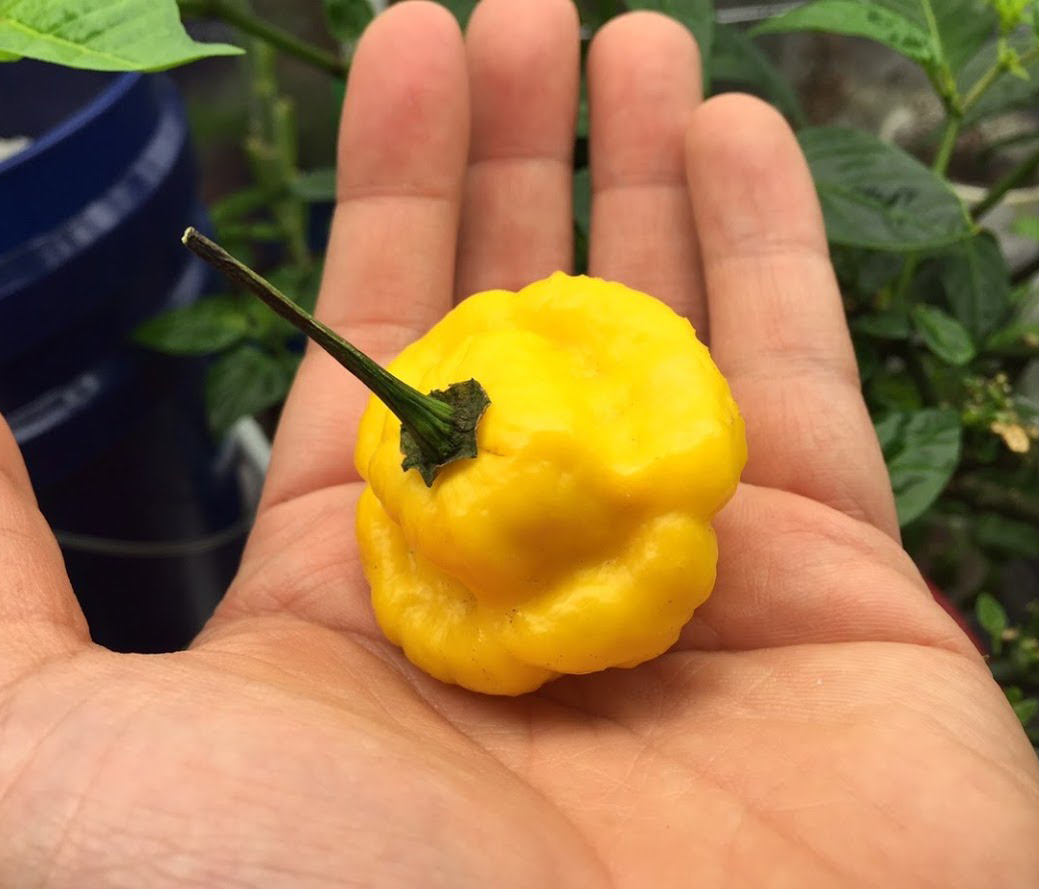
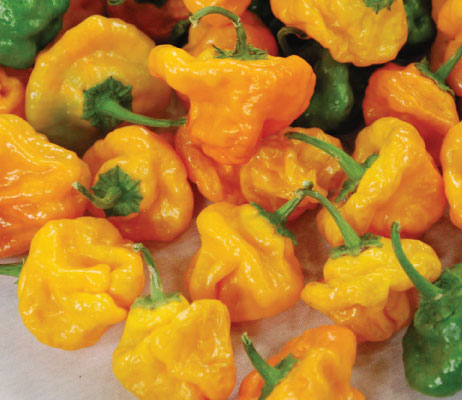
Scotch bonnet:
100,000 – 350,000 SHU. This pepper is a cultivar of the habañero and is among the hottest peppers anywhere. Its name derives from its resemblance to the Scottish Tam o’ Shanter hat, though it appears primarily in the Carribean and in Guyana and the Maldives.


Habañero chili pepper:
100,000 – 350,000 SHU. Related to the Scotch Bonnet. This one is the granddaddy of all the hot peppers in terms of heat level. Grown mainly on the Yucatan Peninsula in Mexico, its coloring is yellow-orange, orange or bright red, depending upon when it’s harvested. Average Size 1 to 2 1/2 inches long and 1 to 2 inches diameter and look generally like in the photos above. I eat these all the time was a little surprised to see them this far down on the heat intensity list, after all you can buy them locally in a lot of the big commercial chain supermarkets in the US and they just never seemed THAT hot. These have a wonderful almost fruity flavor to them, much different than Jalapeños or Serranos. Highly recommended.
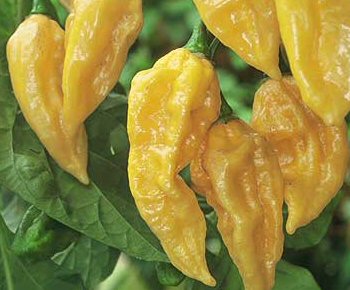
Fatalii:
125,000-325,000 SHU. The Fatalii comes from central and southern Africa, and is one of the hottest peppers in the world. With the heat level of a habañero, it has a more fruity, citrus flavor, and packs an instant, intense burn, unlike the habañero, whose heat “sneaks up on you.”
Devil’s Tongue:
125,000 – 325,000 SHU. The Devil’s Tongue is similar in color and shape to the Fatalii, but with smoother skin and smaller size.
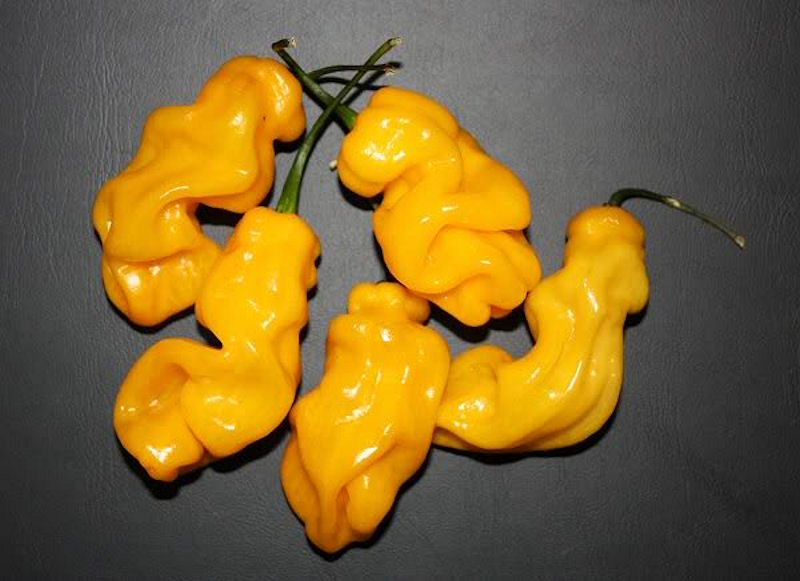
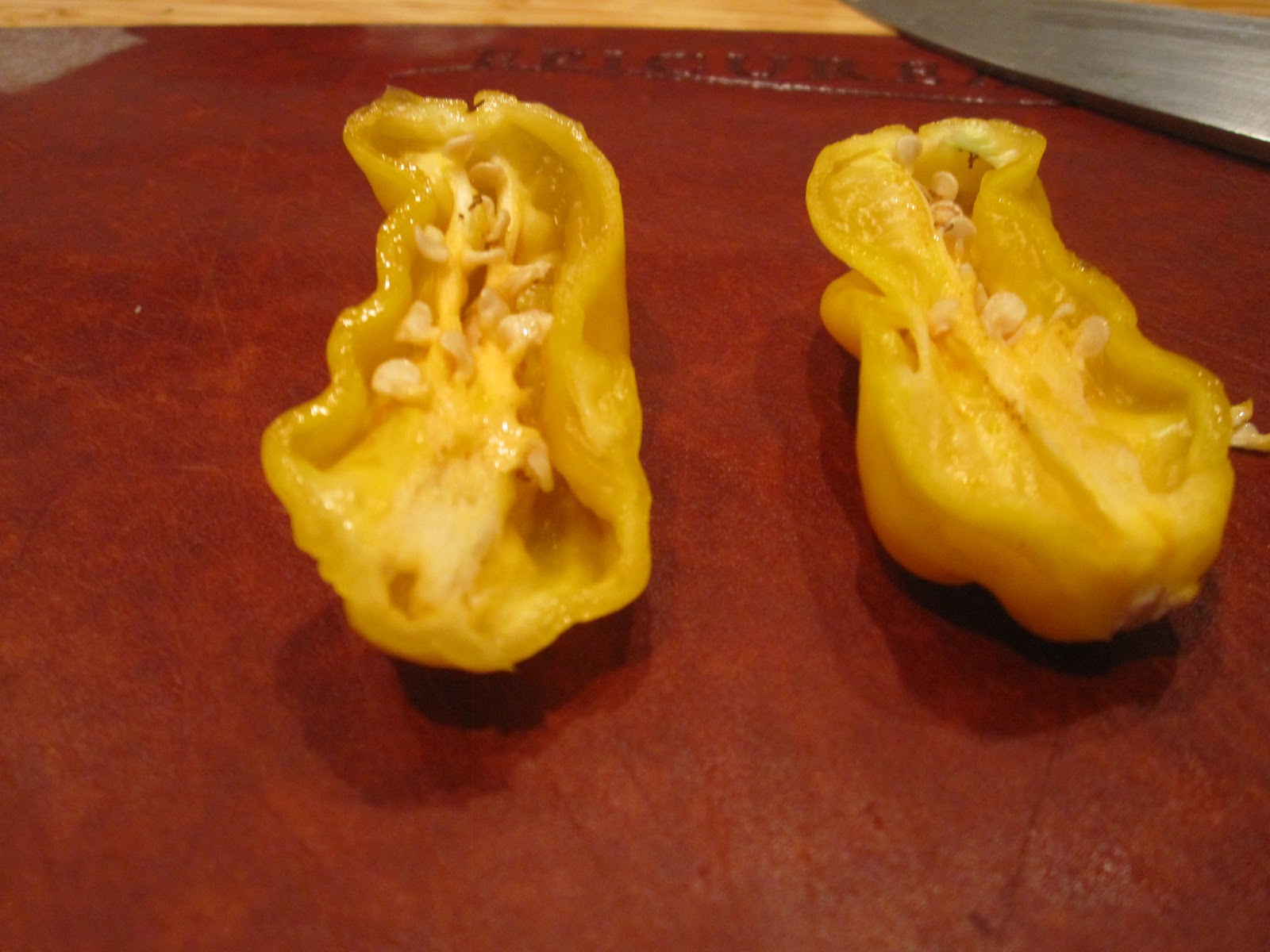
Madame Jeanette:
225,000 SHU. Named after a famous Brazilian prostitute, the Madame Jeanette has the shape of a bell pepper, but the intense heat of a habañero.
Tiger Paw NR chili pepper:
265,000 – 328,000 SHU. Developed in Charleston, South Carolina, the Tiger Paw NR is an extra-hot bright orange habañero variety.
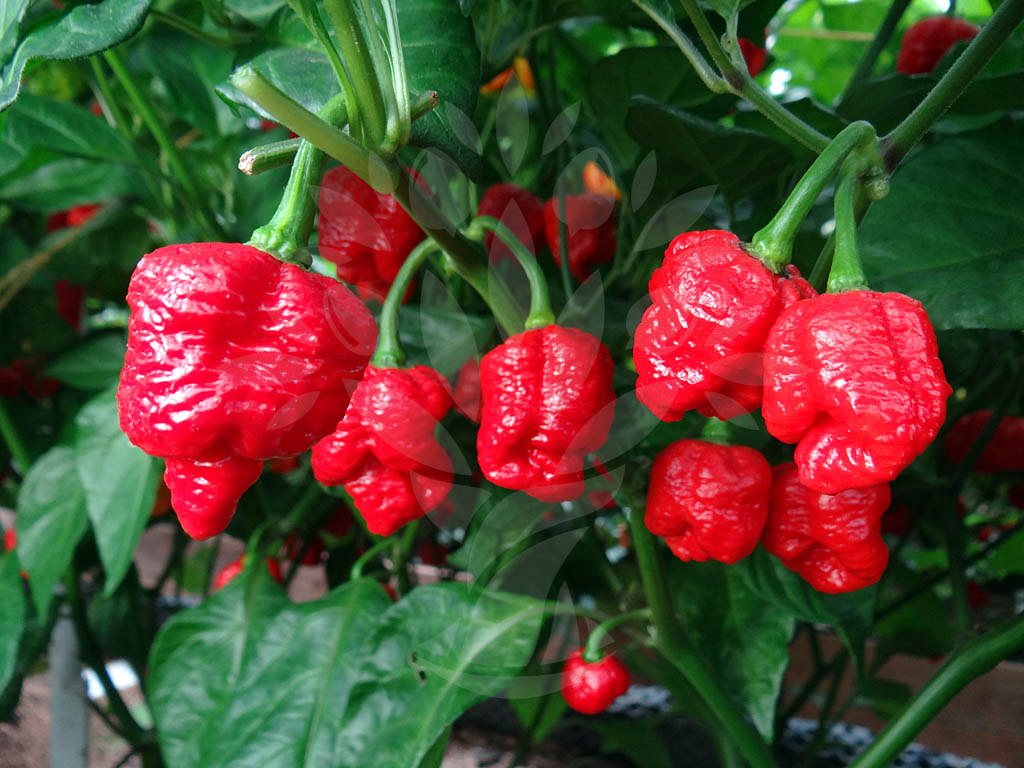
Trinidad Moruga Scorpion chili pepper:
300,000+ SHU. These red, wrinkled peppers resemble the scorpion, hence the name, and are known for their intense heat.
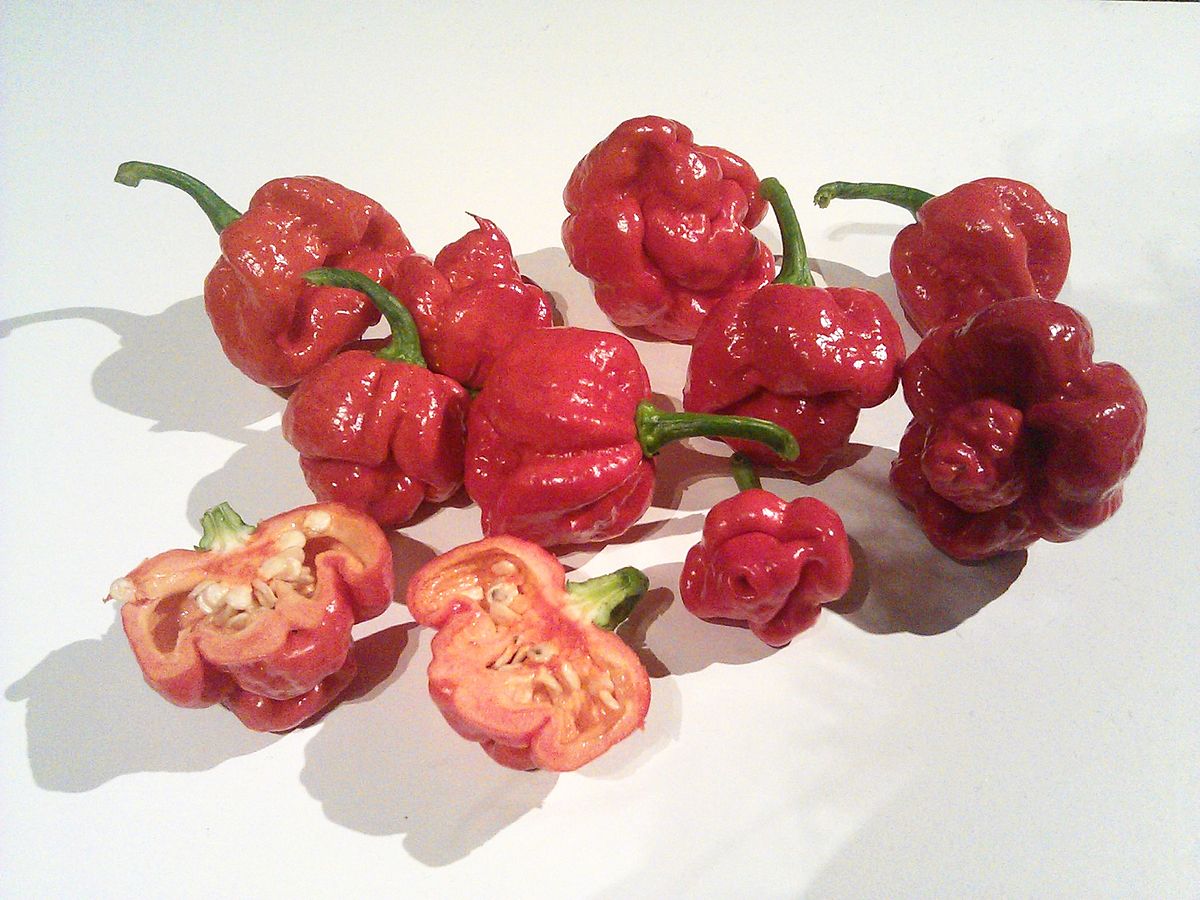
Trini Sco:
Yes, I know we just saw these a second ago, and while most of us are still in the process of assimilating the astonishing honor of witnessing such a pepper, I would like to point out that we are presently in the presence of the former hottest chile pepper in the entire world. I would definitely rank these higher in importance than say…Madonna for example. Easily. (I mean, lets face it, who actually listens to Madonna?)
One might venture that these potentially could be ranked importance-wise somewhere in the general vicinity of Prince. And what beauties they are! Do you see the one cut in half revealing it’s majestic inner architecture (chile pepper geek alert), and how thick it’s skin is? Like mini grapefruit thick, who would have guessed?


Chocolate Habañero chili pepper:
300,000 – 425,000 SHU. The Chocolate Habañero, also known as “Congo Black” or “Black Habañero,” is one of the hottest peppers originating from the Caribbean.
Caribbean Red Habañero:
300,000 – 475,000 SHU. This extremely hot pepper, originally from the Yucatn peninsula in Mexico, is now also cultivated in the Carribean and around North America.
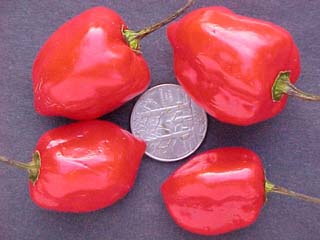
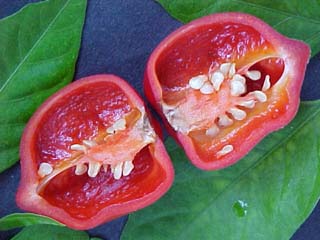
Red Savina Habañero:
200,000 – 580,000 SHU. This pepper is a cultivar of the habañero. It once held the Guinness Record for the hottest chili pepper, but the Bhut Jolokia (AKA Booty Ghost) later claimed that prize only to be ousted by more modern and scorching newcomers. If you have not tried one of these, the best way to describe it would be to imagine that a nuclear bomb had just went off in your mouth, annihalating your taste buds. In a famous interview, poet/scholar/chile enthusiast Wallace Blackie Gold was asked how he would describe these, he responded “A Boca Nuke”. Amen.
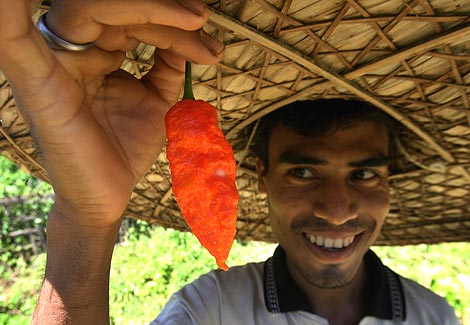
Bhut Jolokia:
1,001,304 SHU. With over a MILLION SHU The Bhut Jolokia was the Heavyweight champion holding the title of the hottest chili pepper in the world for many years.
Naga Jolokia
It’s just another name for the Bhut Jolokia chili pepper. Interesting trivia: The word “Naga” is sanskrit for “Snake” and in Hindu mythology means “…a member of a semidivine race, part human and part cobra in form, associated with water and sometimes with mystical initiation…”
Ghost Pepper or Ghost Chili
It’s just another name for the
Bhut Jolokia chili pepper.
Nalga Jolokia or Booty Ghost
Yet another name for the
Bhut Jolokia chili pepper.
7-Pot Chili Pepper
Over 1 Million SHU. The heat of the 7-Pot pepper is similar to the Bhut Jolokia but with a more fruity and nutty flavor, like other Caribbean peppers. It is becoming more popular and well-known among chile-heads, but the seeds are very rare and hard to find.
Gibralta/Spanish Naga Chili Pepper
1,086,844 SHU. The Gibralta Naga, or Spanish Naga, is of course grown in Spain, but was developed in the UK from Indian chili peppers.
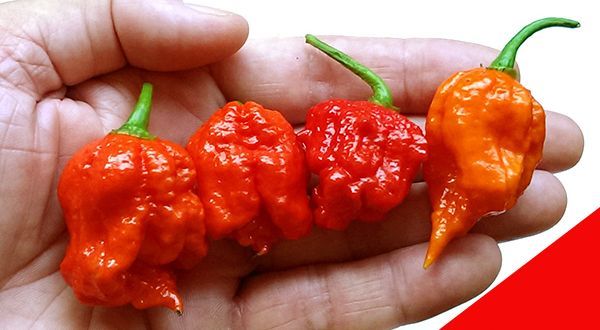
Infinity Chili Pepper
1,176,182 SHU. Created in England by Nick Woods of “Fire Foods,” the Infinity Chili pepper held the World Record for the world’s hottest chili pepper for two weeks in 2011, before it was ousted by the Naga Viper chili.
New Mexico Scorpion
1,191,595 SHU. A New Mexico-based team has developed a super-hot chile known as the “New Mexico Scorpion” The New Mexico Scorpion has been rated at 1,191,595 Scoville Heat Units by an independent laboratory.
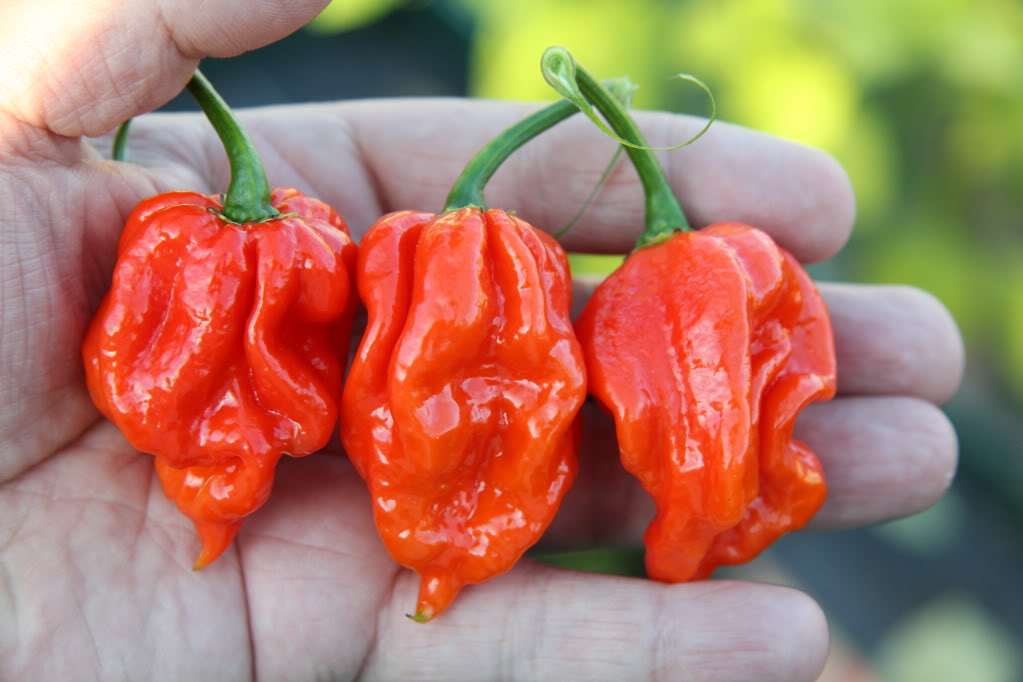
Naga Viper
1,382,118 SHU. The Naga Viper (capsicum chinense) has been rated at 1,382,118 Scoville Heat Units (SHU), according to tests conducted by the Warwick HRI Mineral Analysis Laboratory, UK, in November 2010.
Trinidad Scorpion Butch T
1,463,700 SHU. The Trinidad Scorpion Butch T has been rated at 1,463,700 Scoville Heat Units (SHU), according to recent tests. It was propagated by Butch “Bitch” Taylor of Zydeco Hot Sauce and grown by the Chilli Factory.
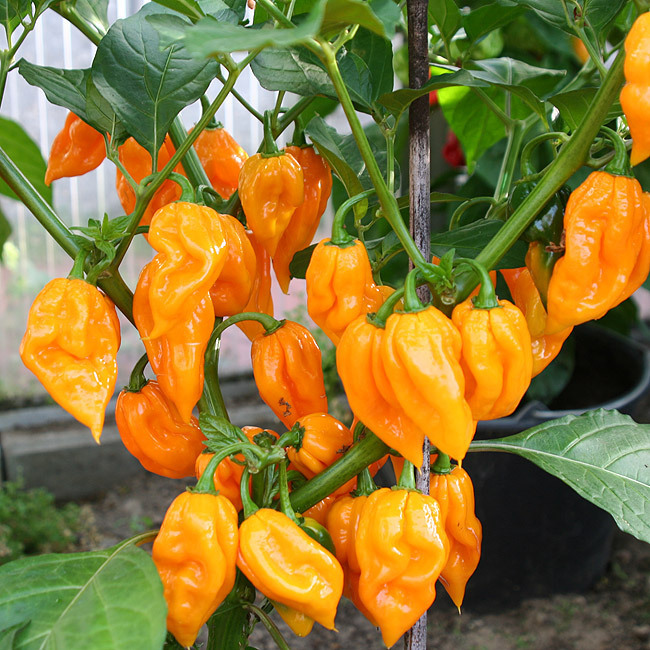
Dorset Naga Chili Pepper
1 million – 1.5 million SHU. (Capsicum Chinense) Development of the Dorset Naga began near Dorset, England, around 2001 when Joy and Michael Michaud of “Peppers by Post” bought a Naga Morich plant from an Oriental foods store in southern England.
Bingdip Chili Pepper
1 million – 1.8 million SHU. (Sandeep Bingdip) Developed by existential scholar Sandeep Bingdip after going out on a date with his high school sweetheart (Soisowe Gupthai) wanted to see if he could cultivate a chili pepper that would outshine his love for her. He failed but managed to found one of the hottest and most aphrodisiacally alluring chiles in existance.
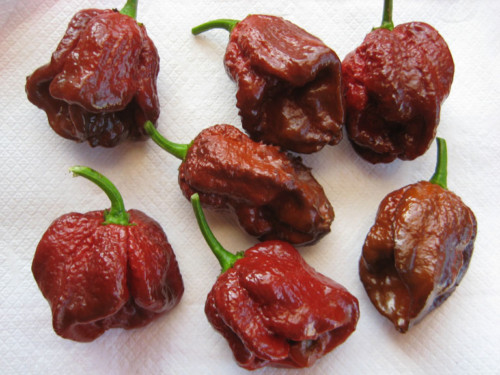
Chocolate 7-Pot Chili Pepper
Recently tested between 923,000 and 1.85 million SHU, with an average of 1,169,058. In 2012 only the Moruga Scorpion scored higher but since then a newer champion has emerged (keep reading!!!). It is suspected that it could reach 2 million in the future.
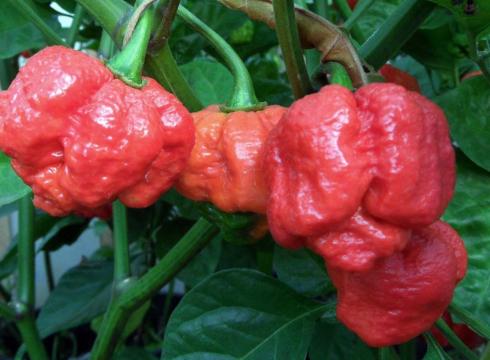
Trinidad Moruga Scorpion
2,009,231 SHU. In February 2012, the 2012 New Mexico Chile Conference, in association with Jim Duffy of Refining Fire Chiles, announced that the Trinidad Moruga Scorpion was the hottest chili pepper in the world. Clocking in at 2,009,231 SHU, can you say "Boca Nuke".
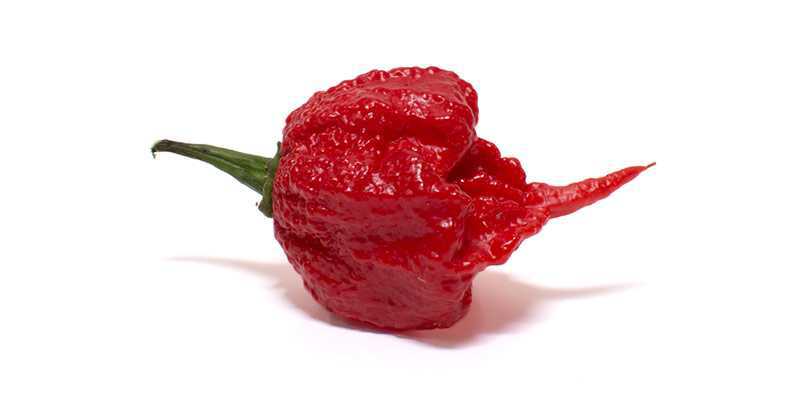
Carolina Reaper
Average SHU of over 1.5 million and peaking at 2.2 Million SHU. Bred in a Rock Hill, South Carolina greenhouse by “Smokin” Ed Currie, the Carolina Reaper was certified as the world’s hottest chili pepper by Guinness World Records since August 7, 2013. Apparently it is a cross between a Pakastani Naga and a Red Habanero. Word is that isn’t just a fireball but has some mojo in the flavor department as well, Get the fire extinguisher, ’cause I’m ready to try one…and
you?
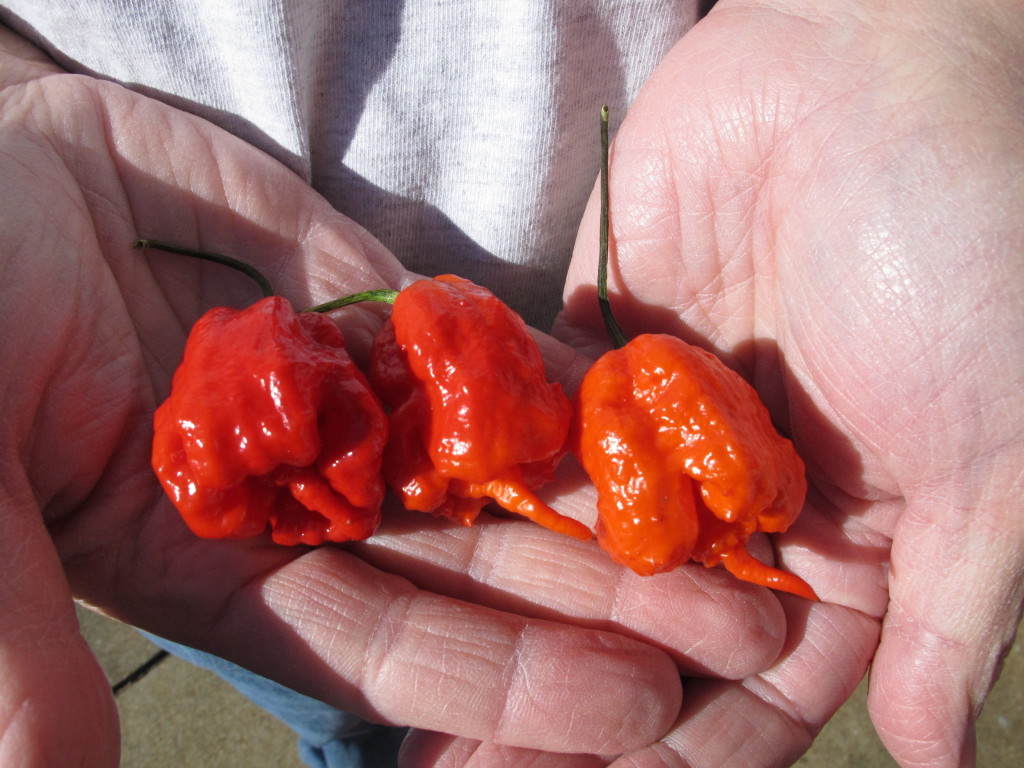
Carolina Reaper Peppers
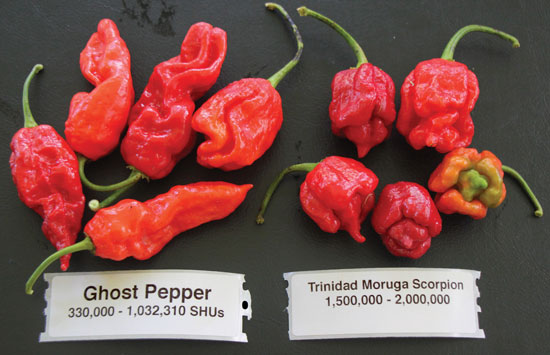
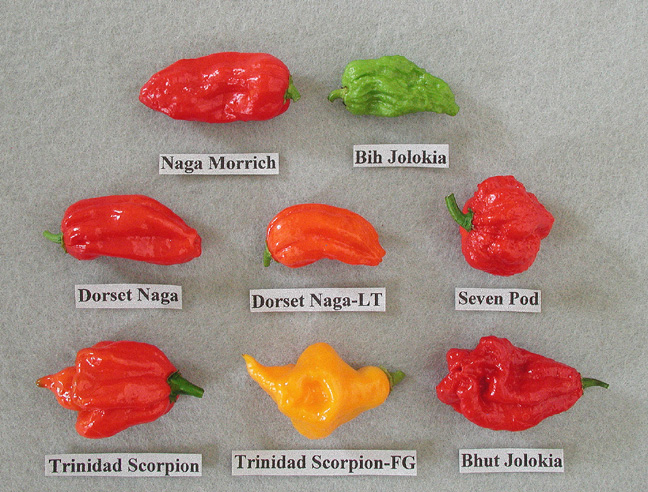
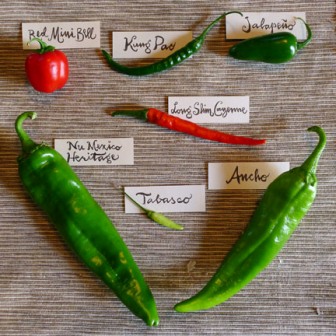
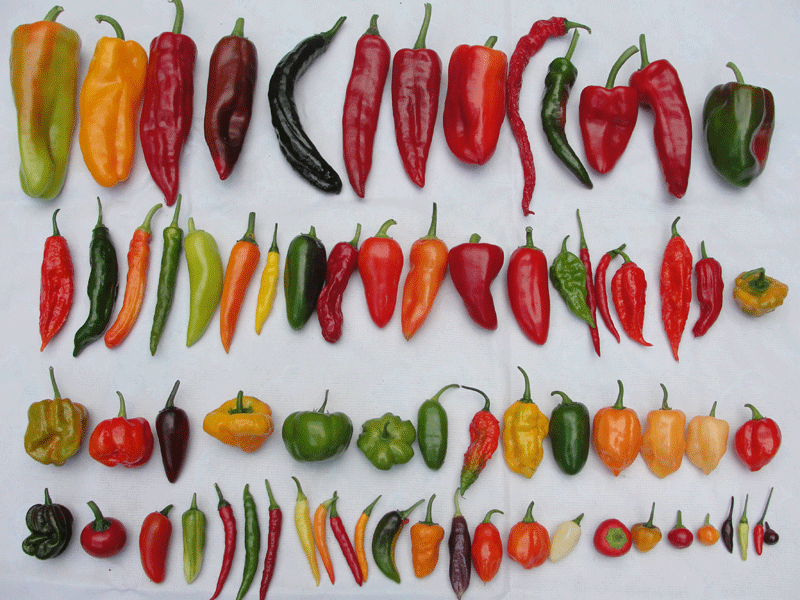
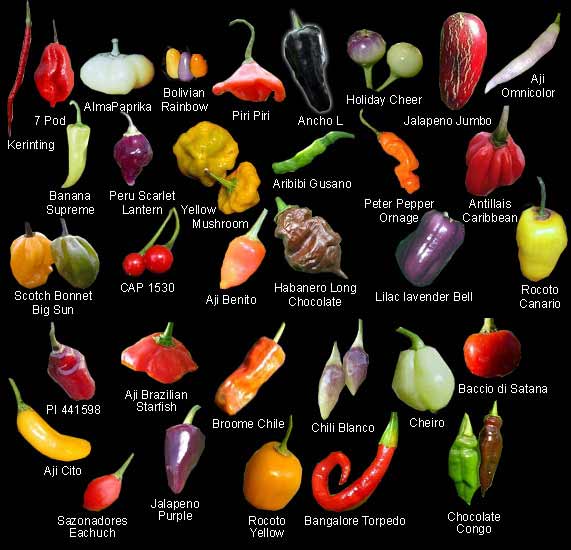
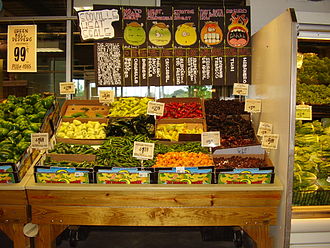
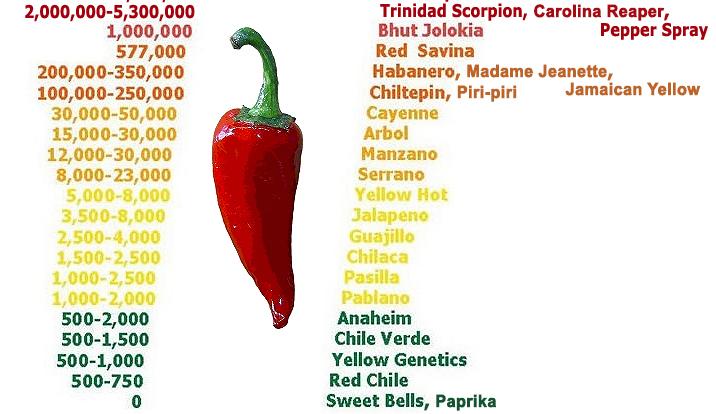
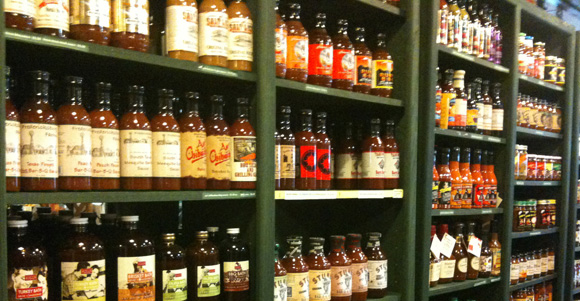
Heliotricity Reviews
9/18/2018